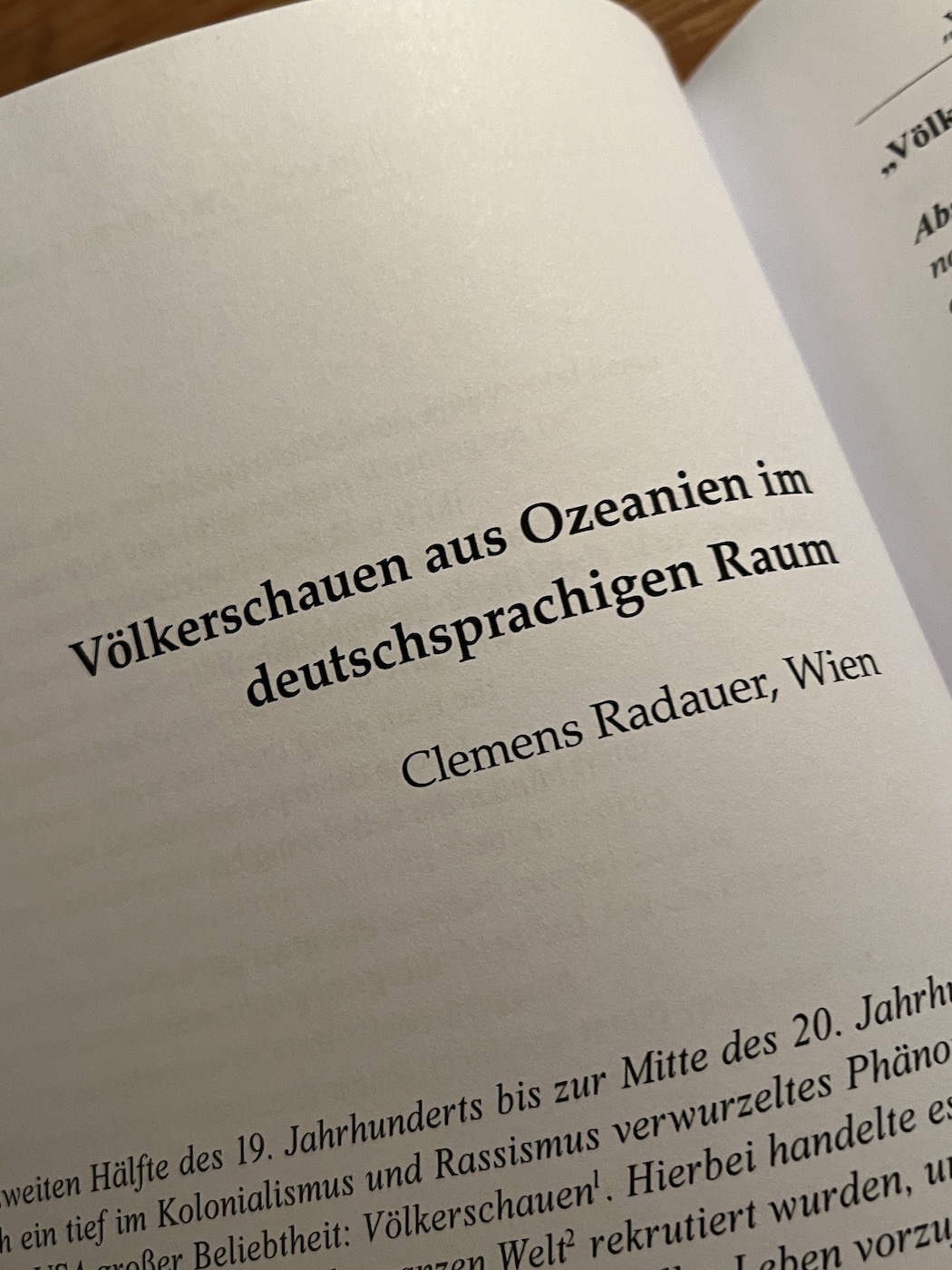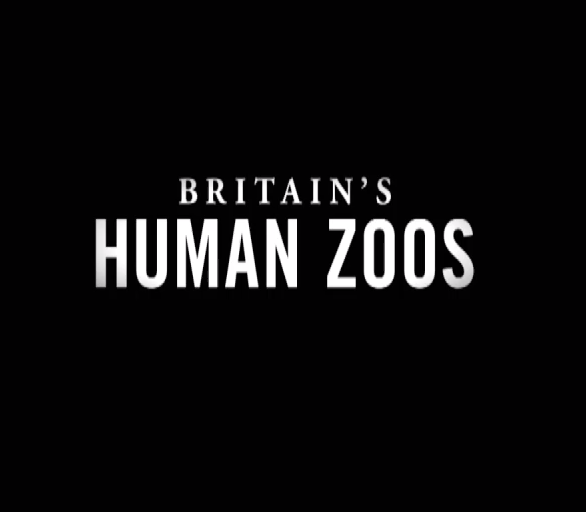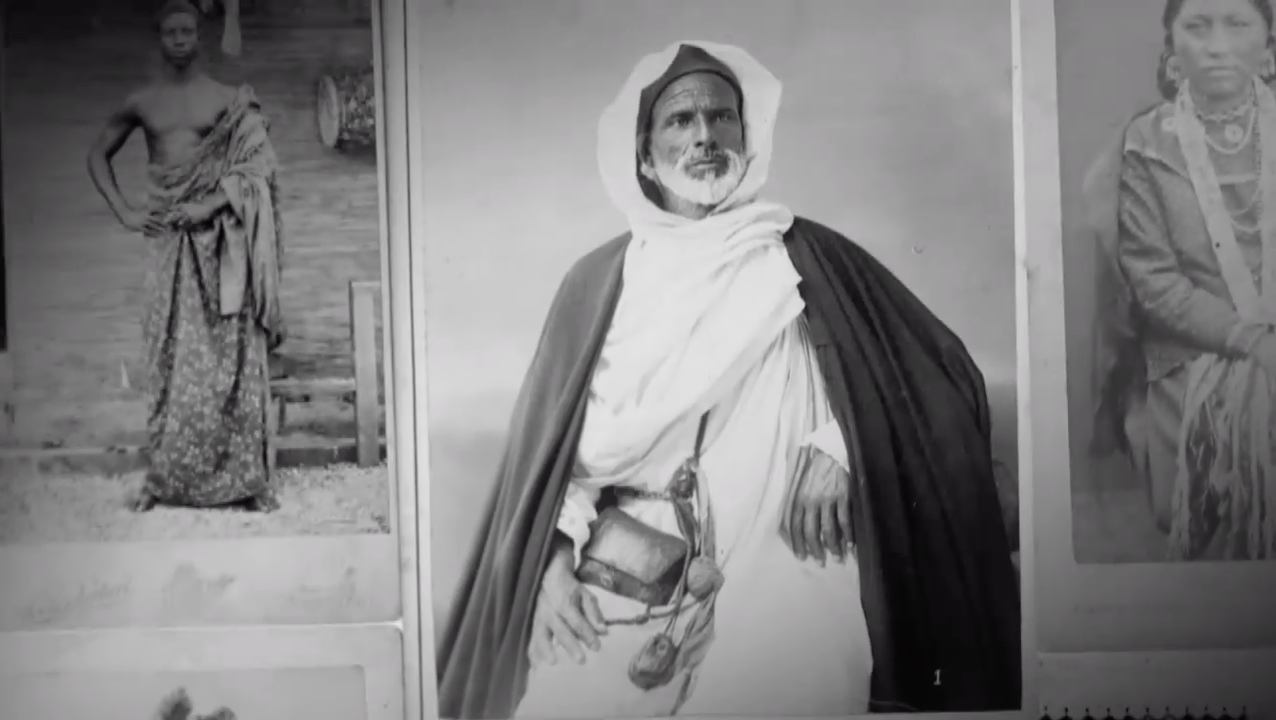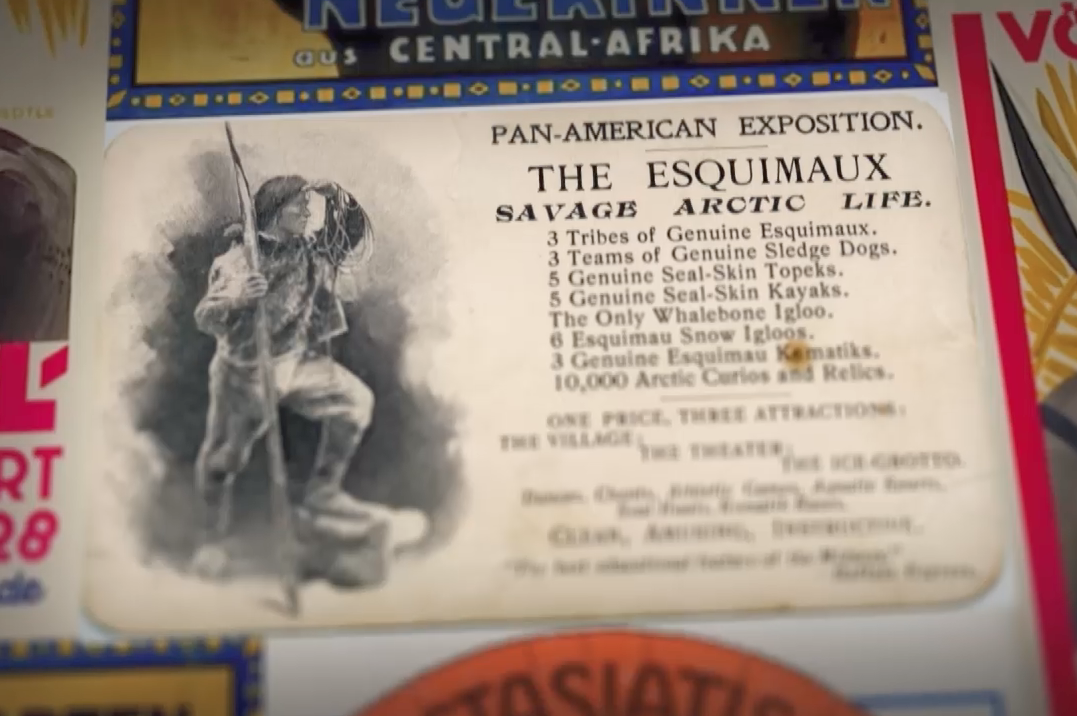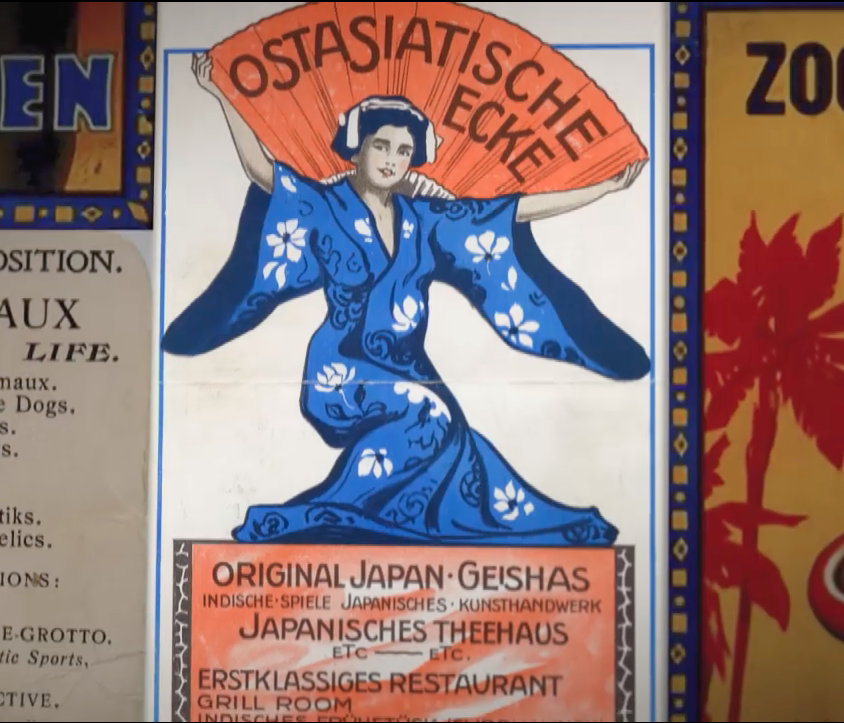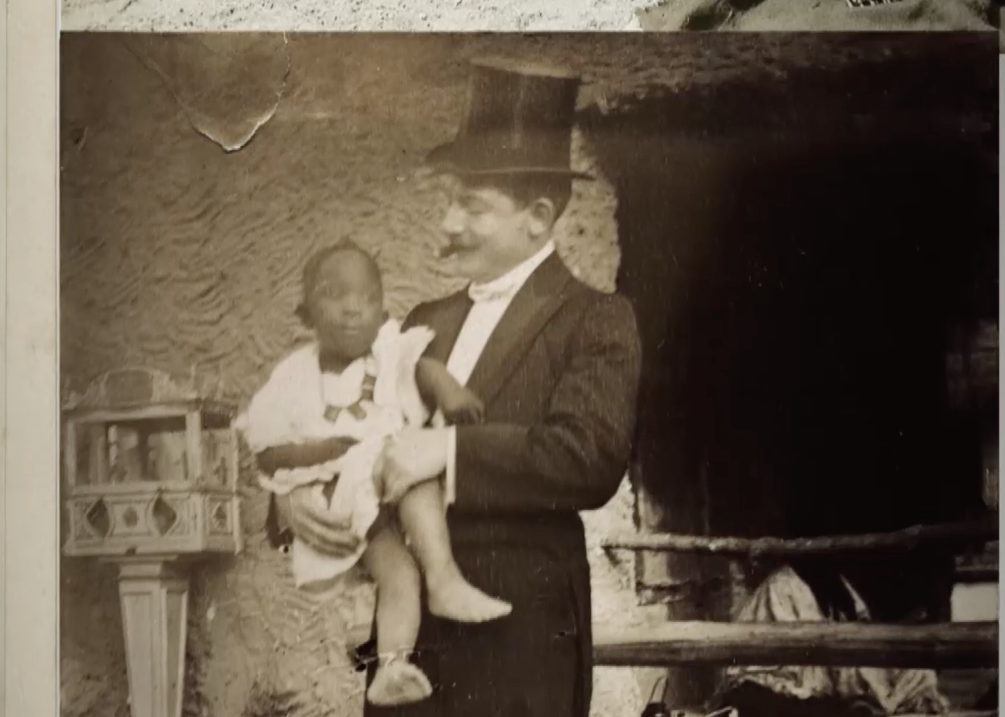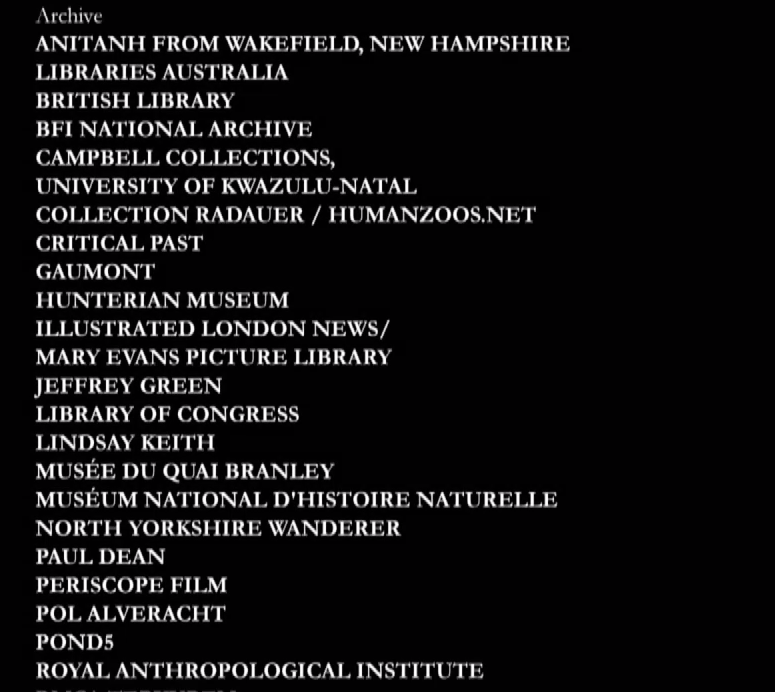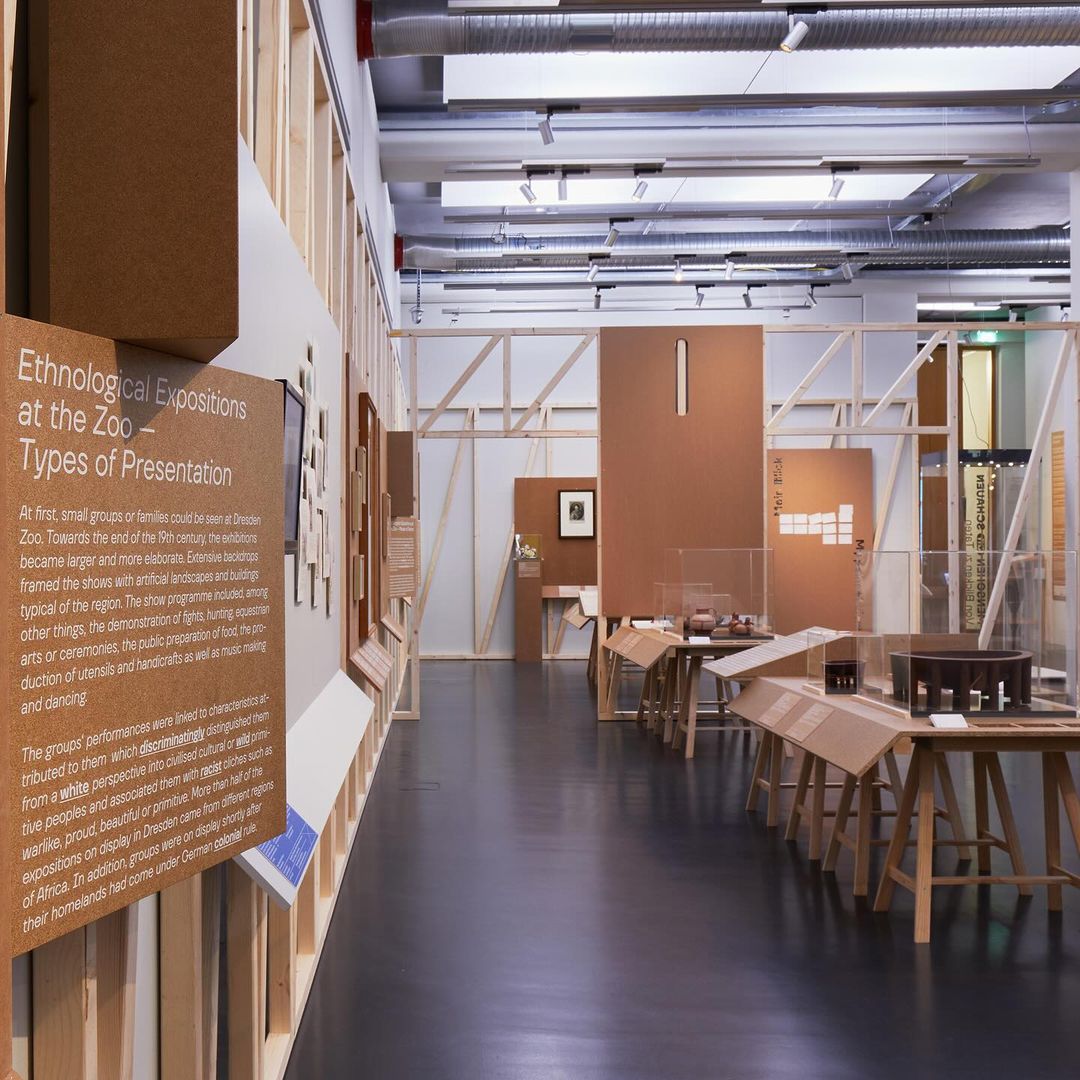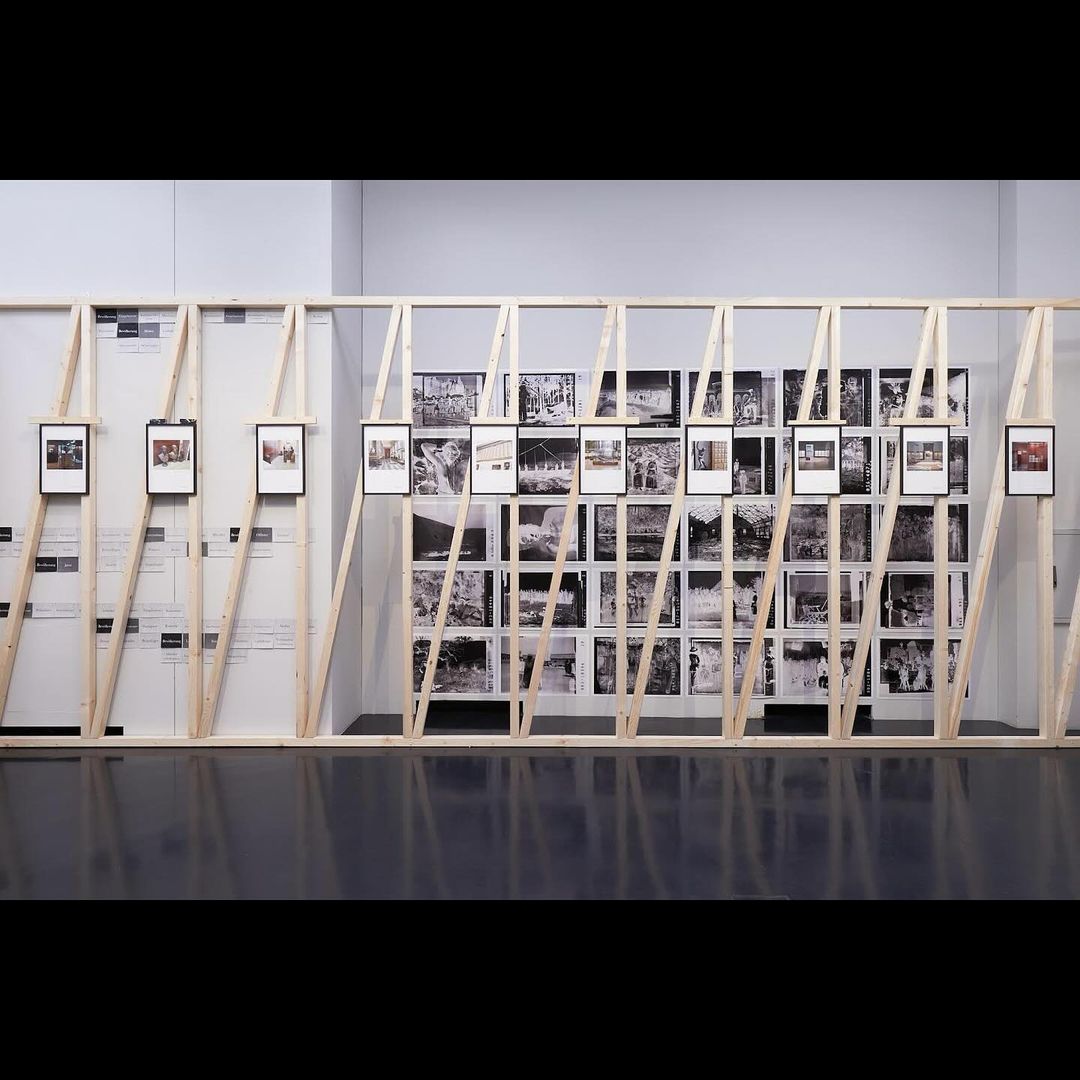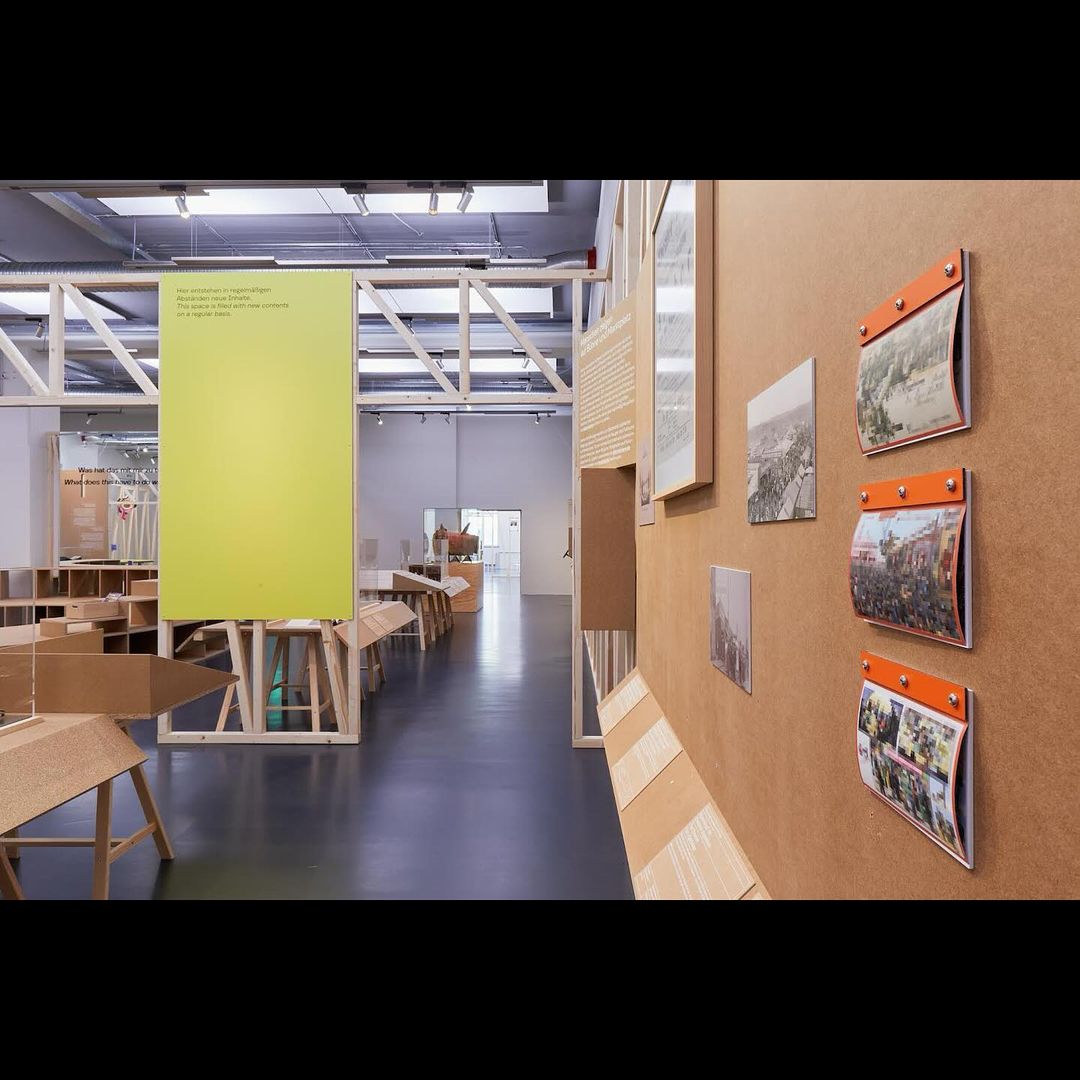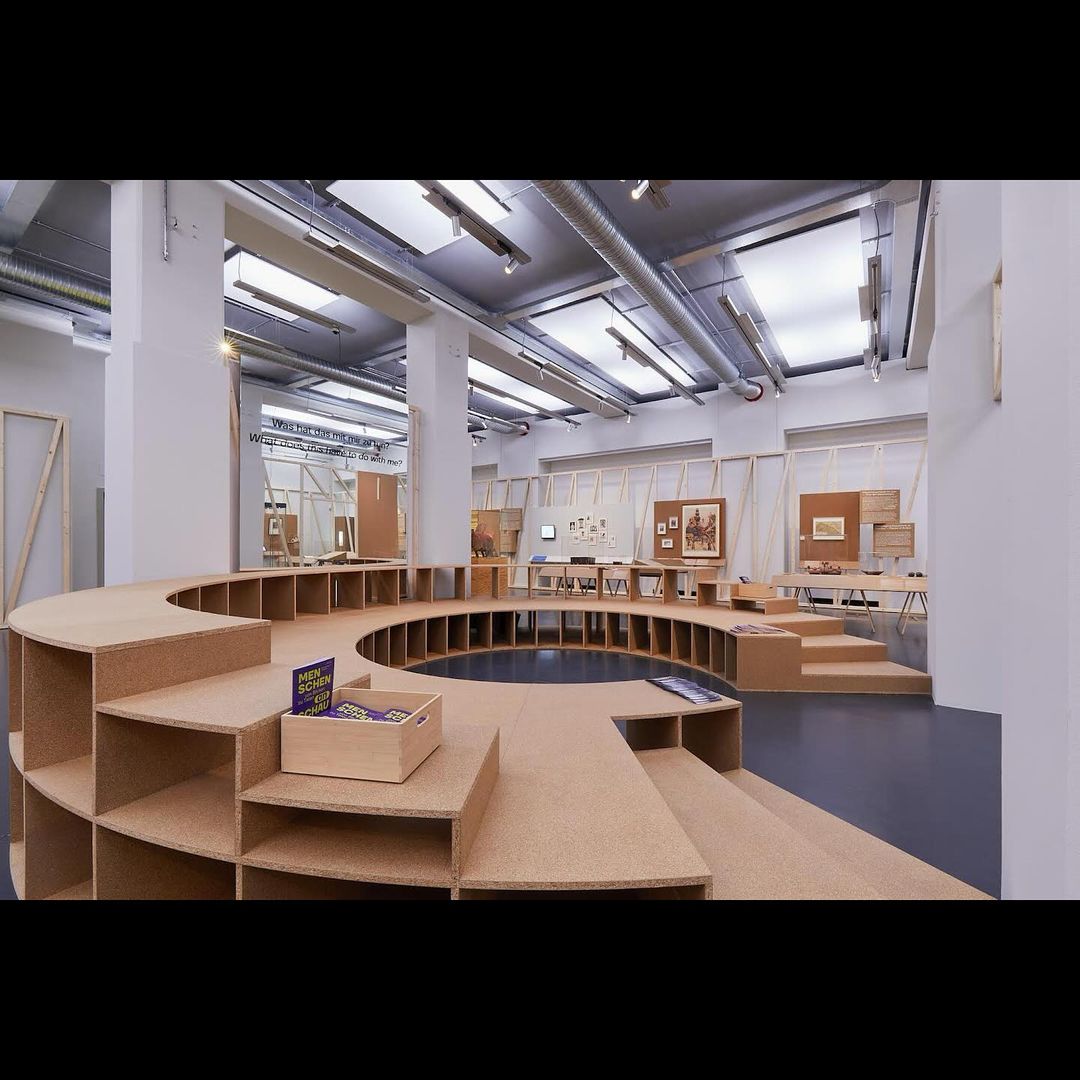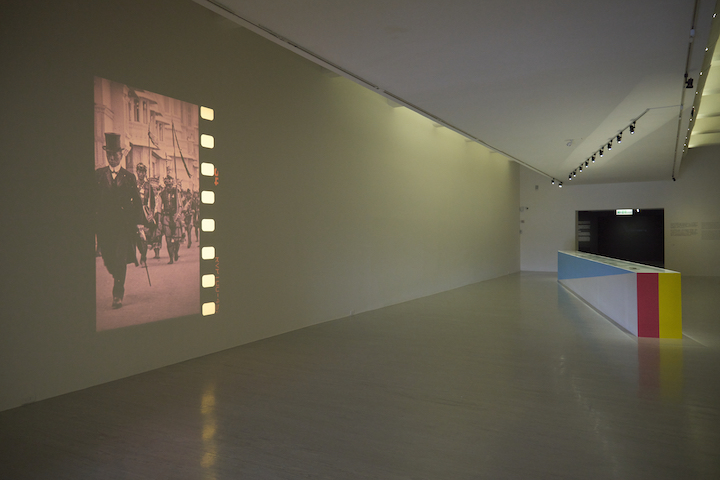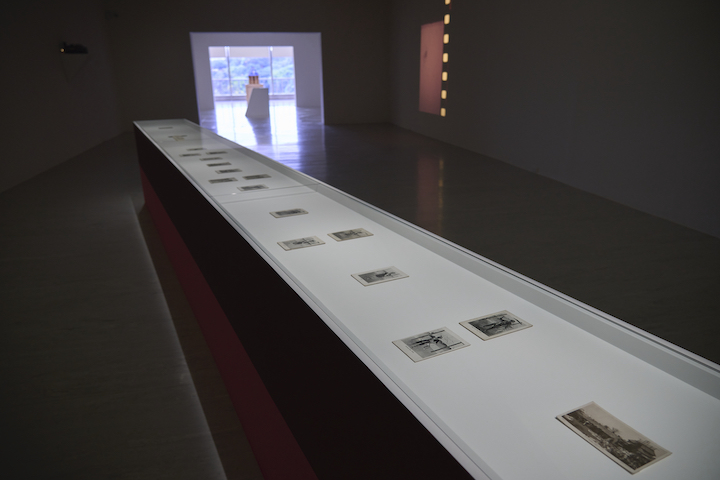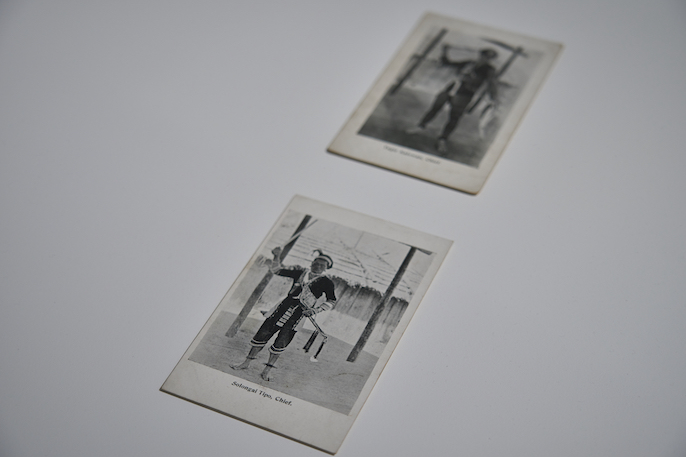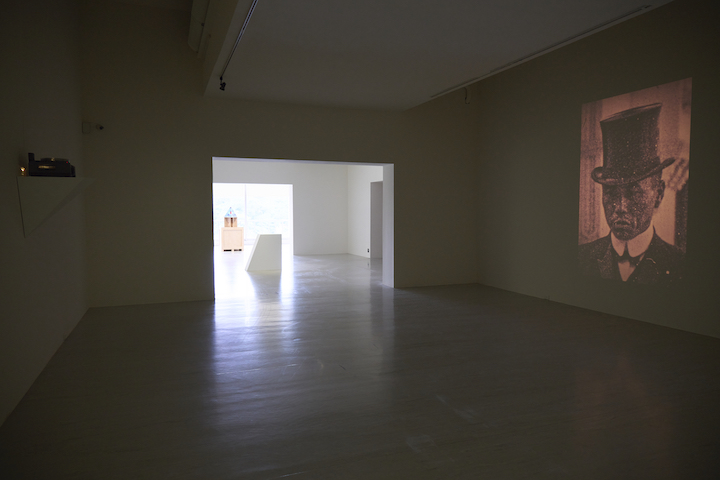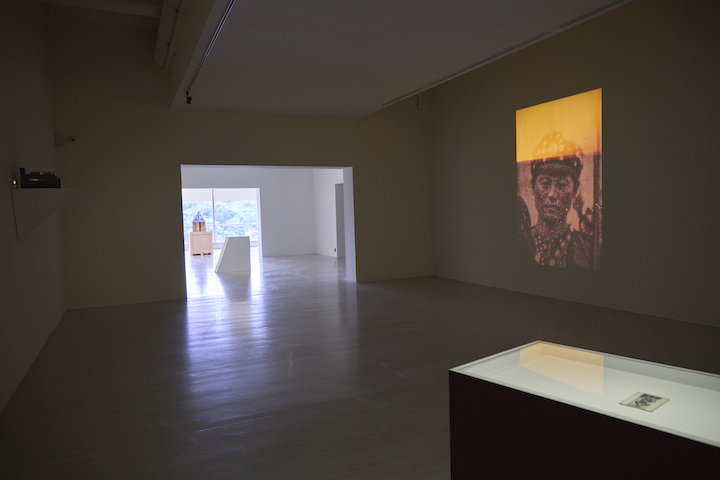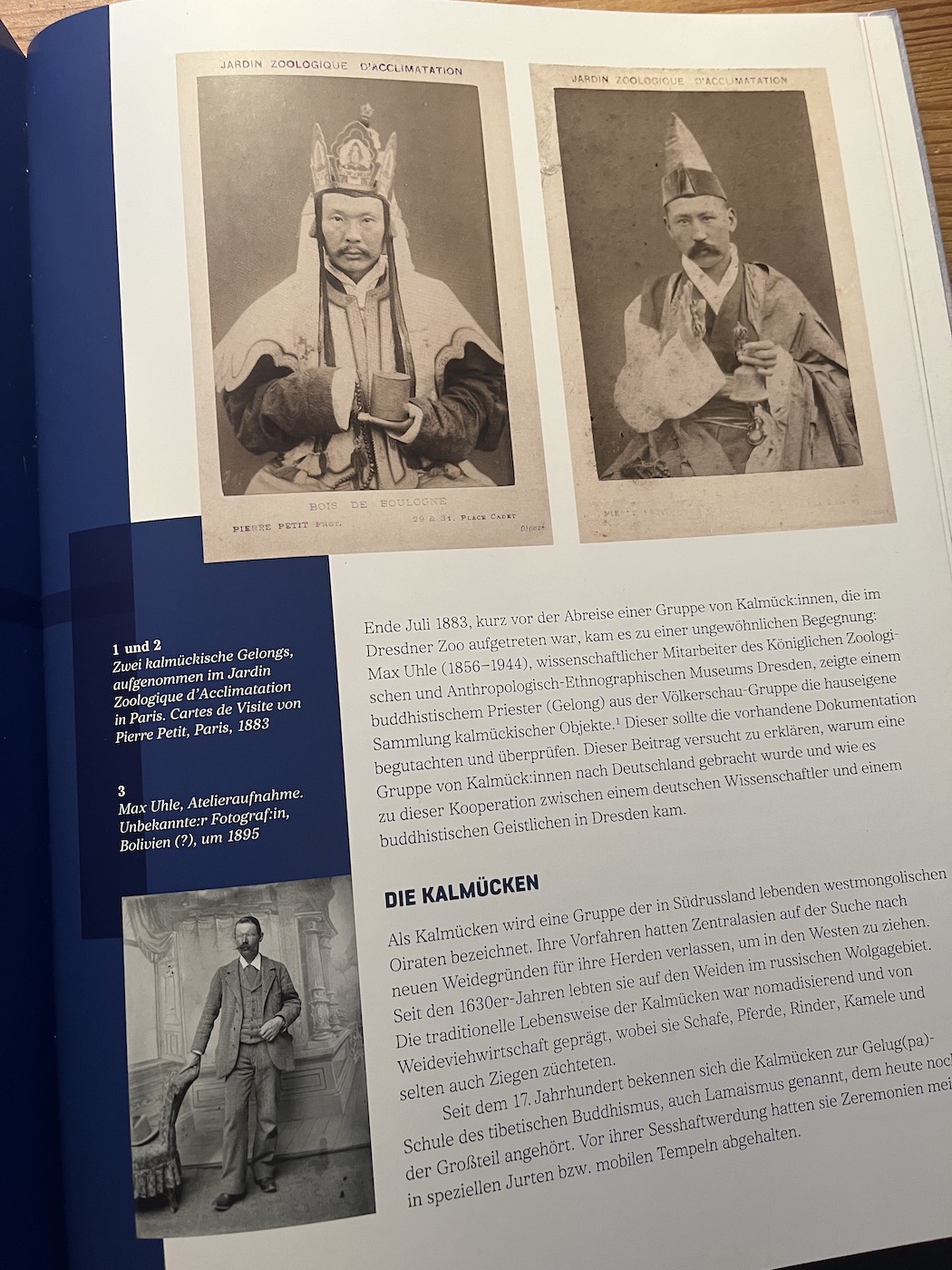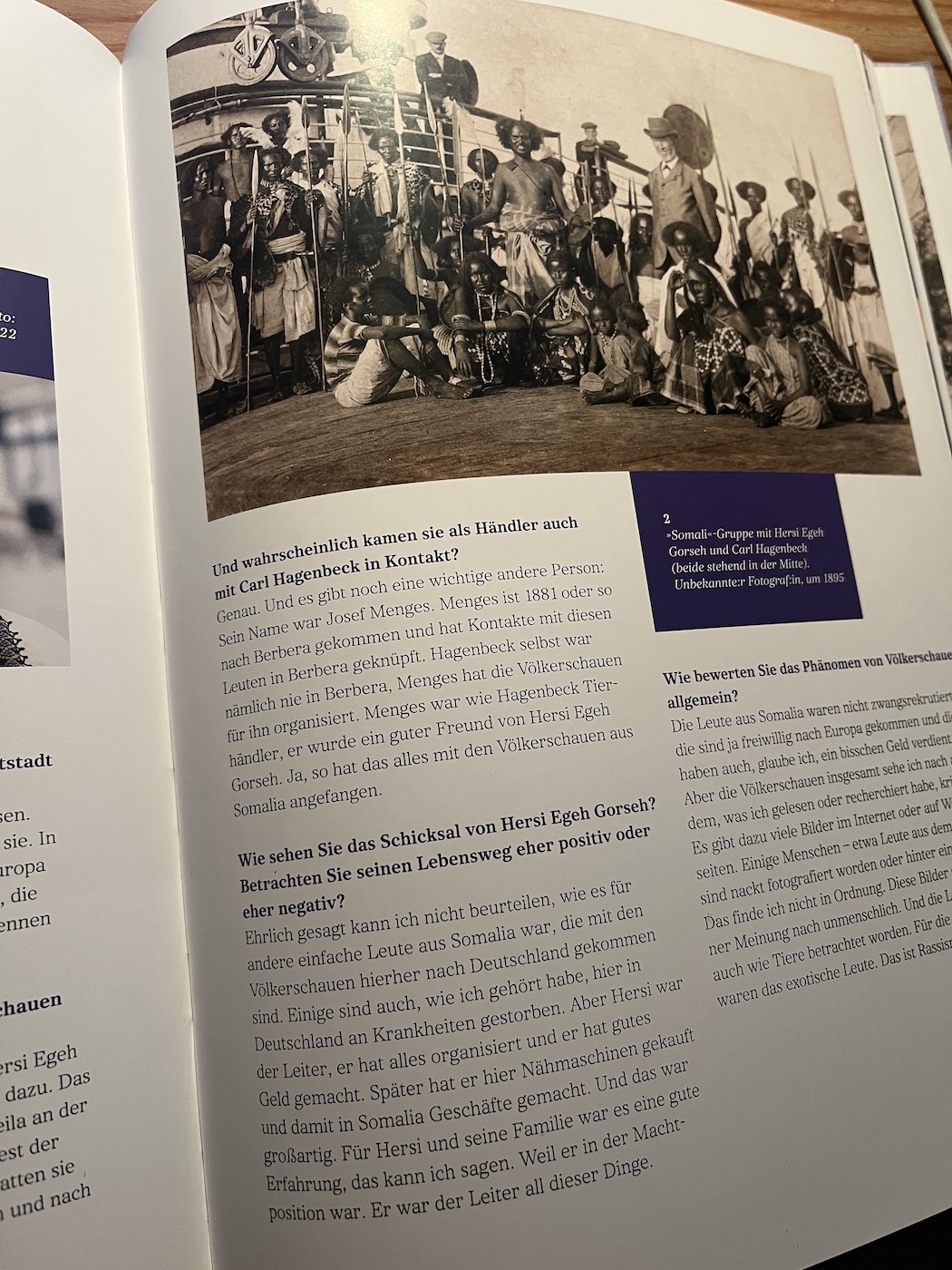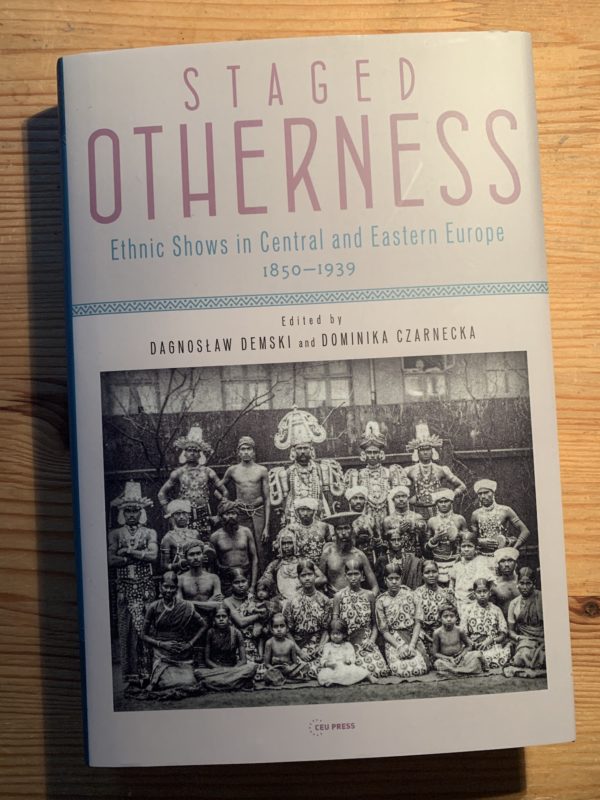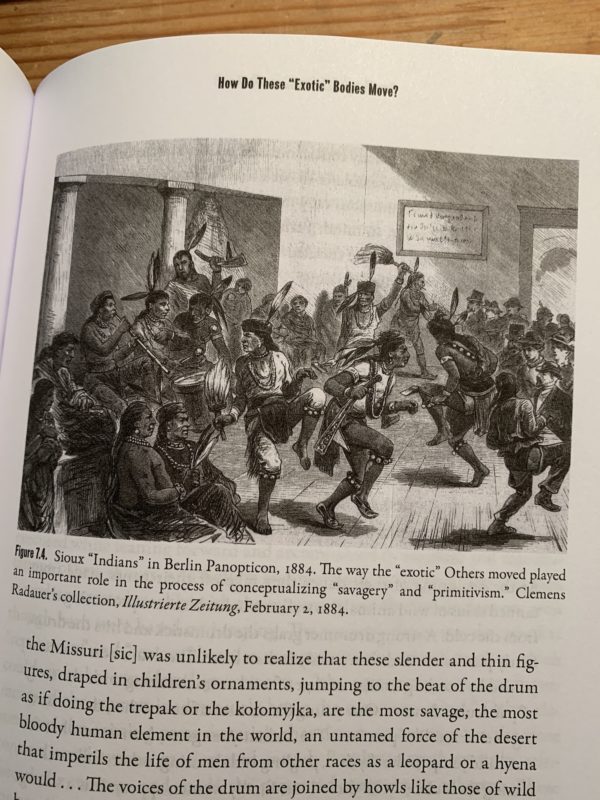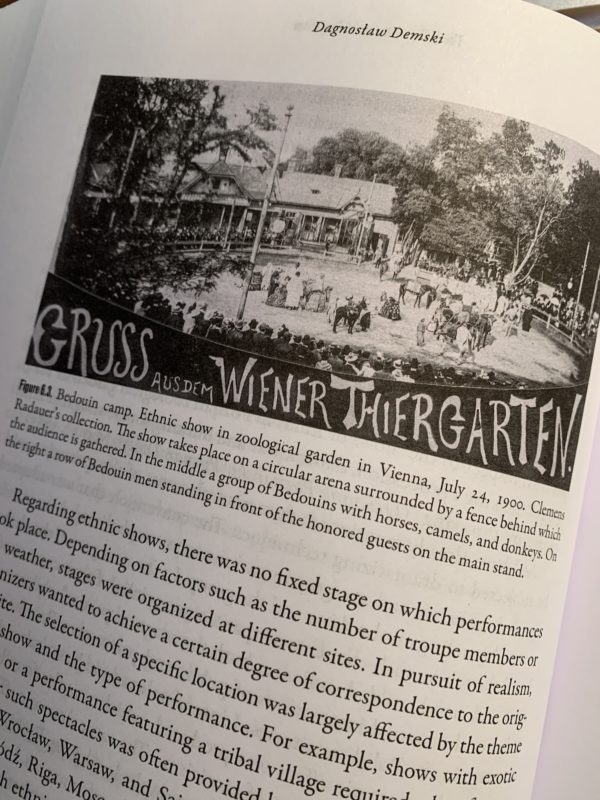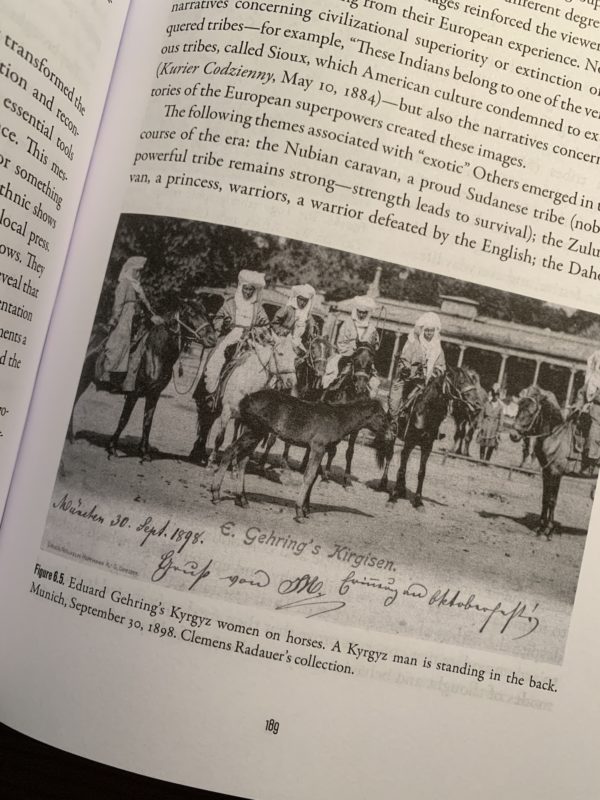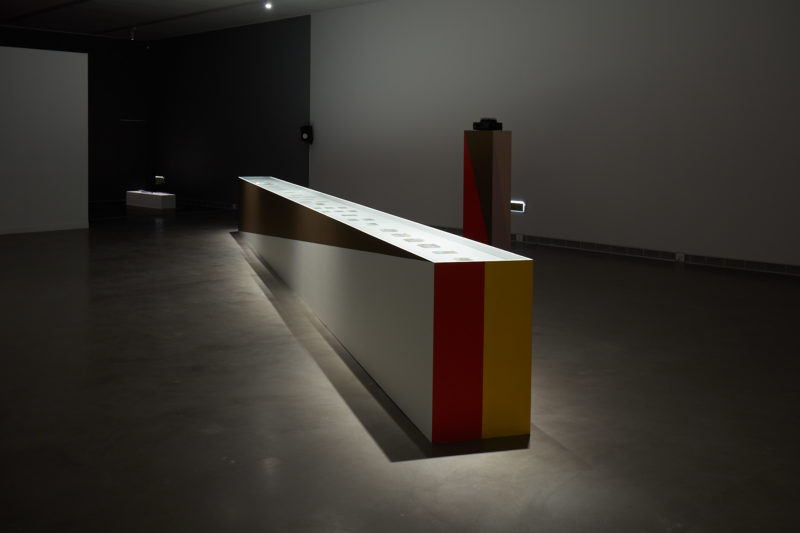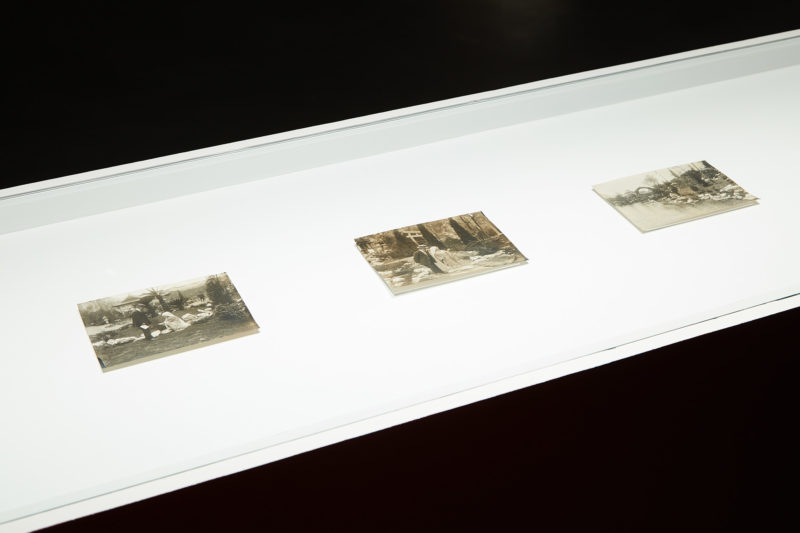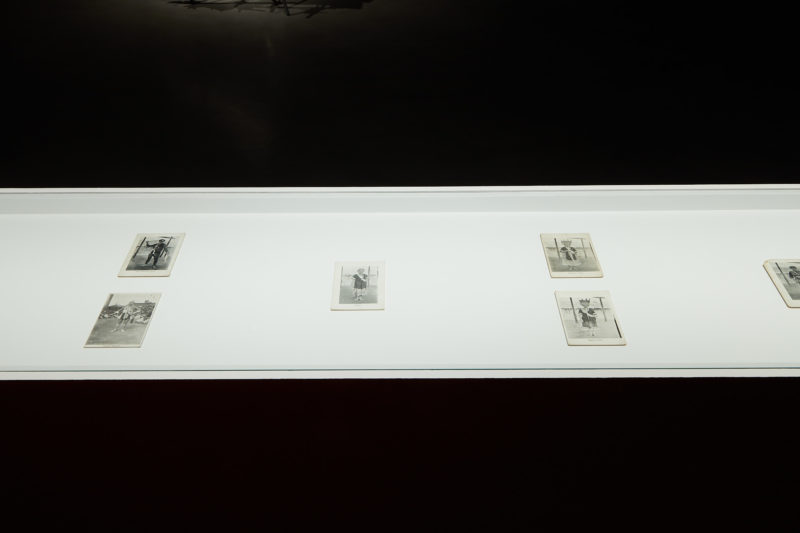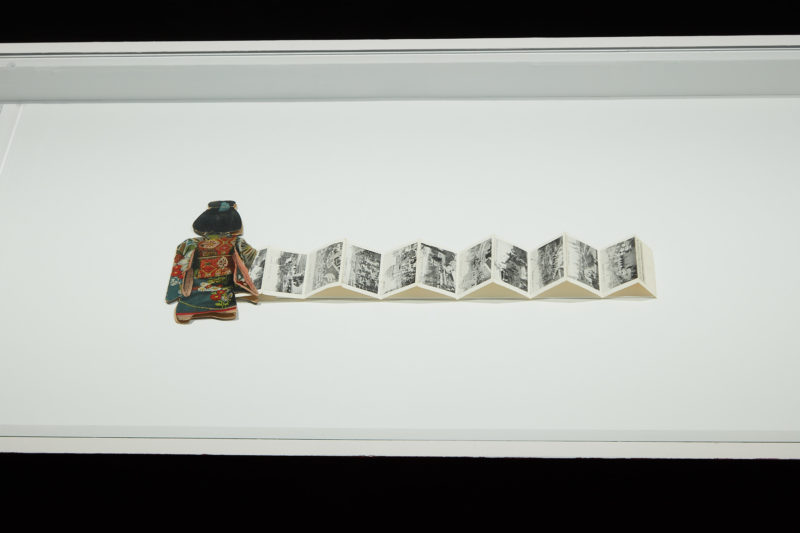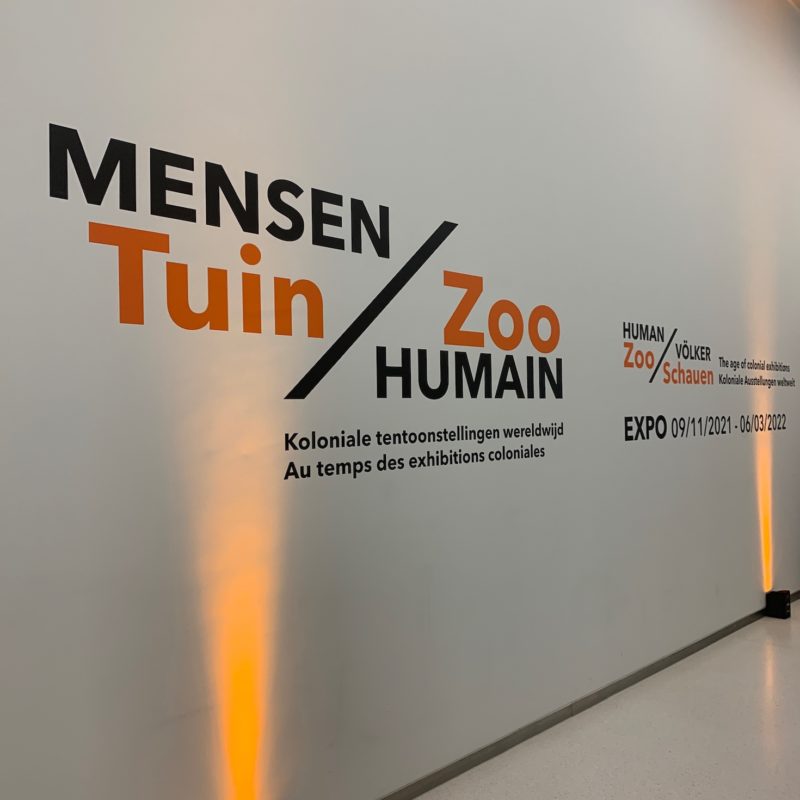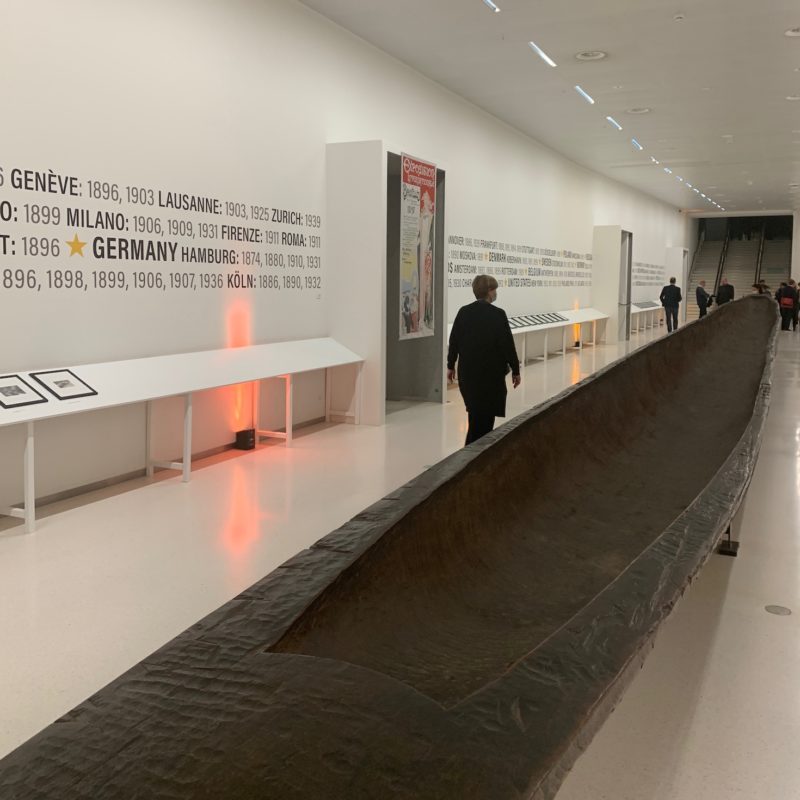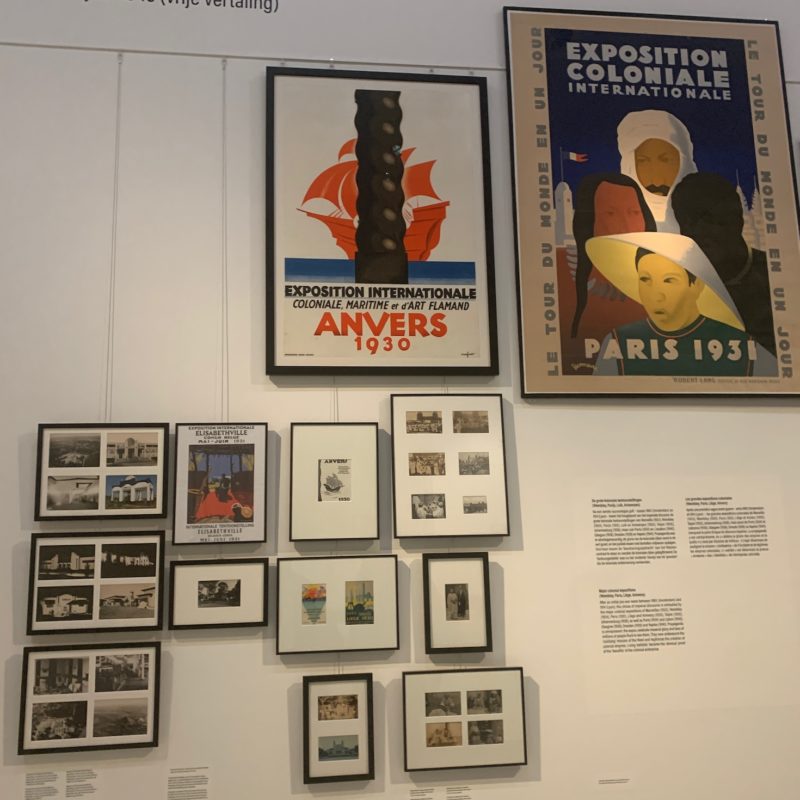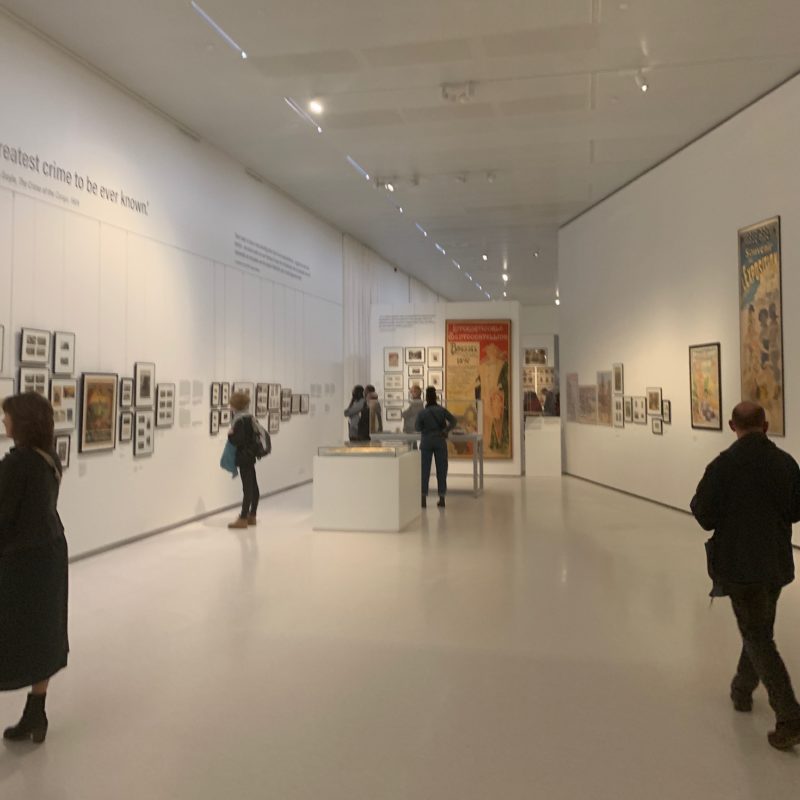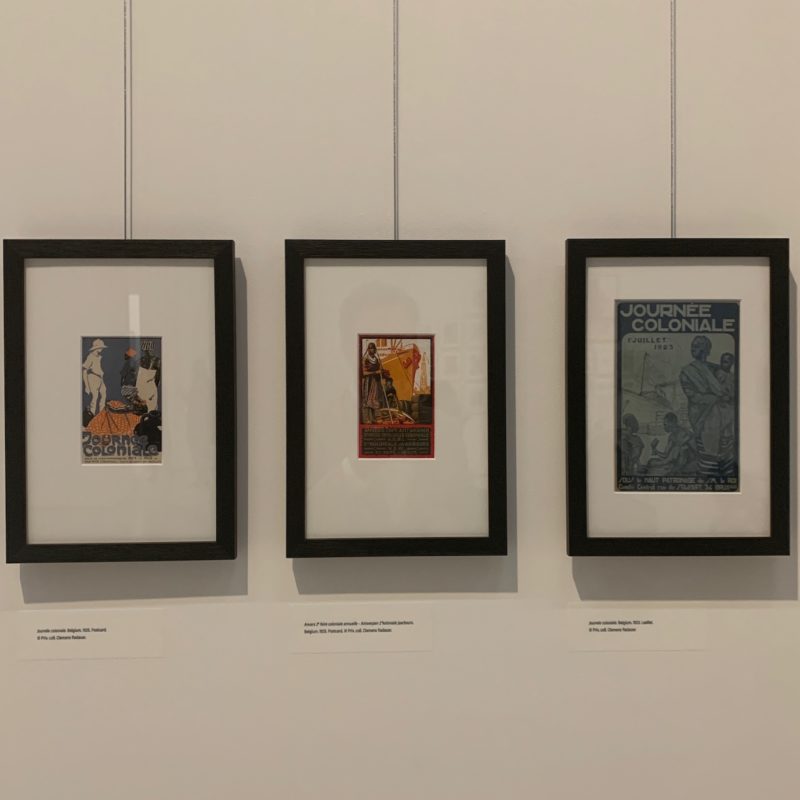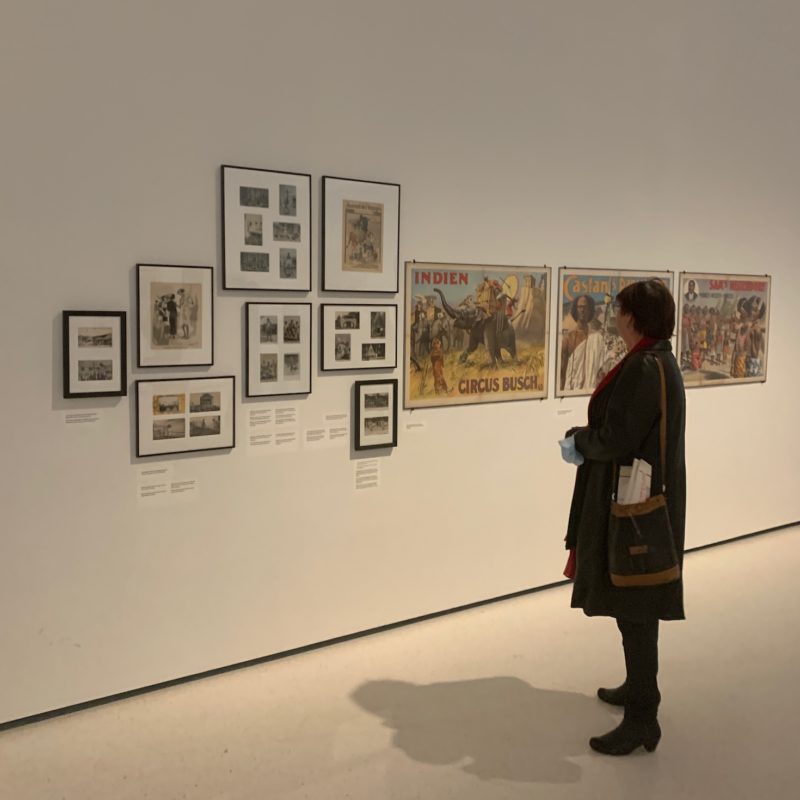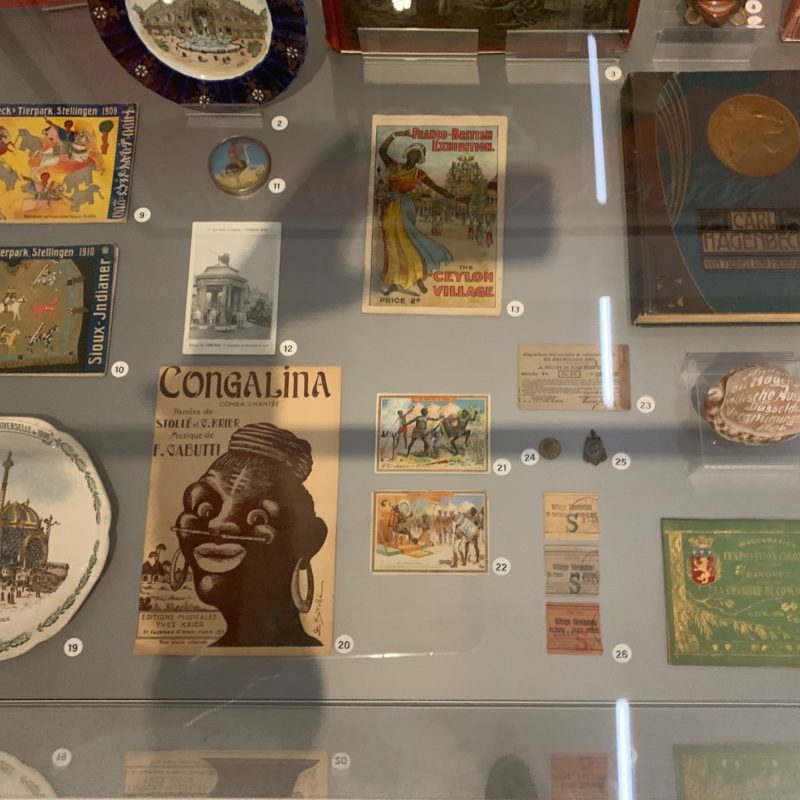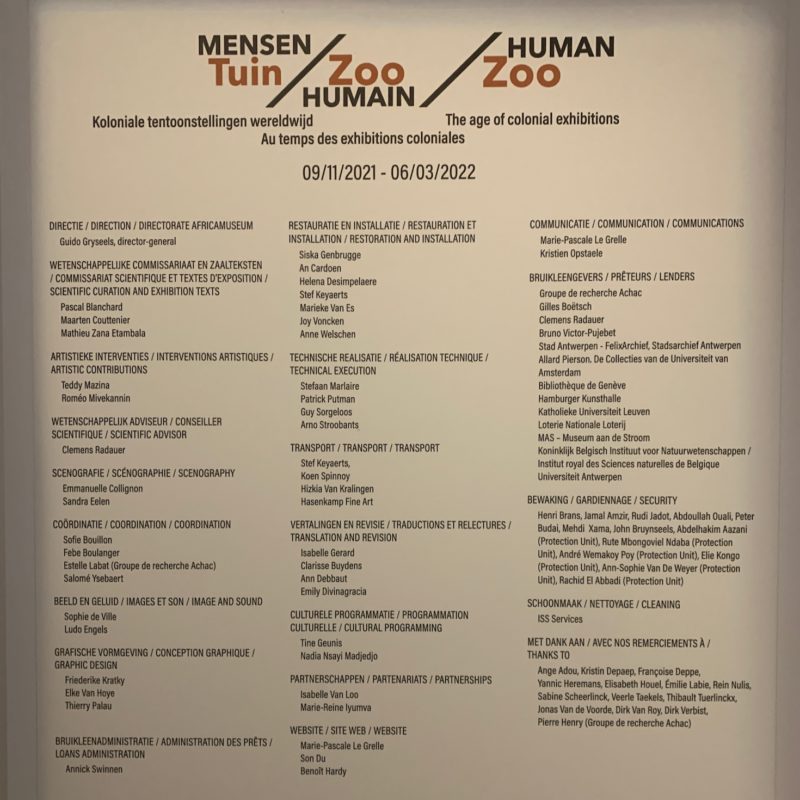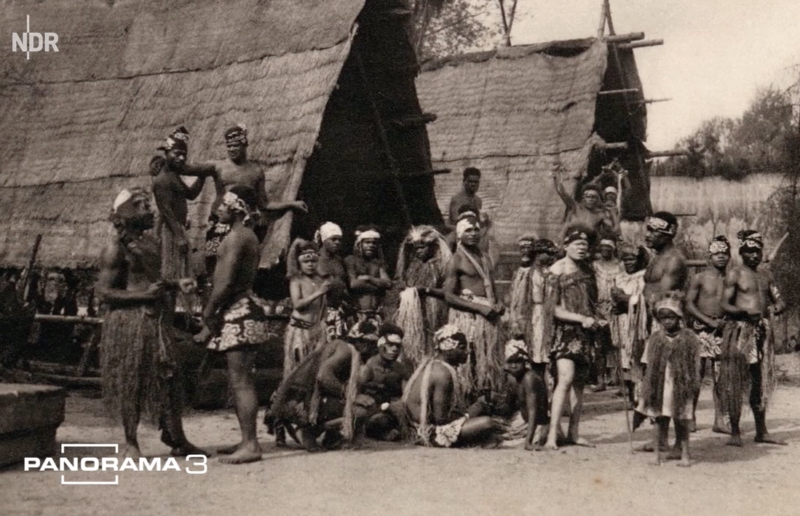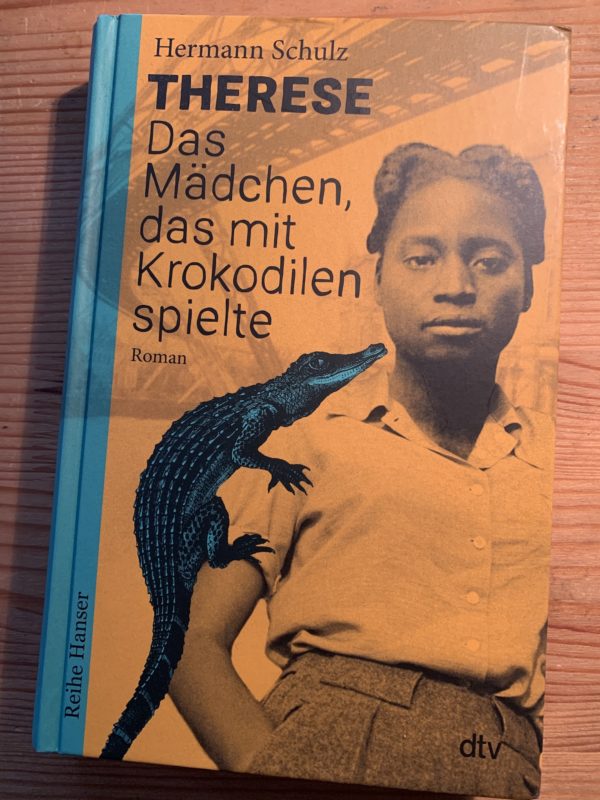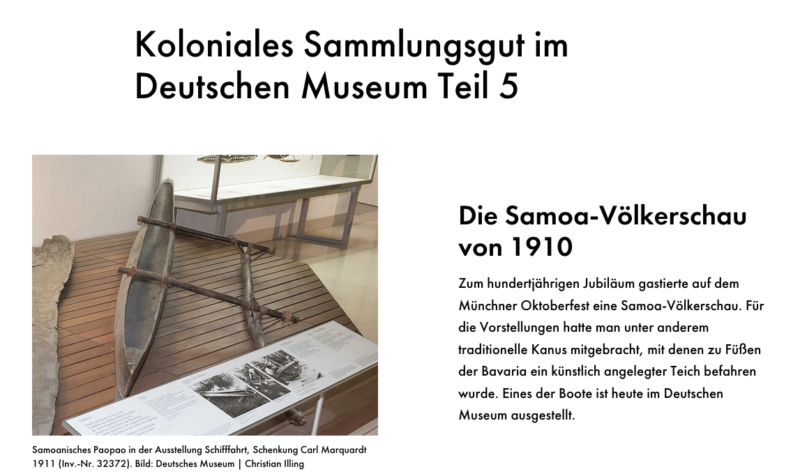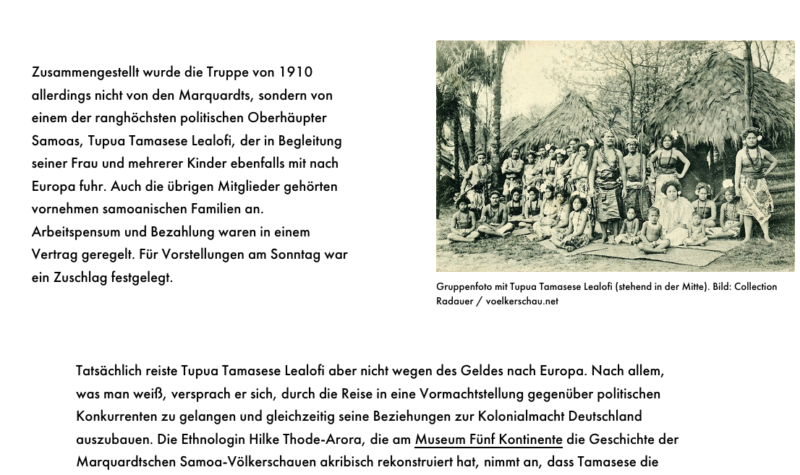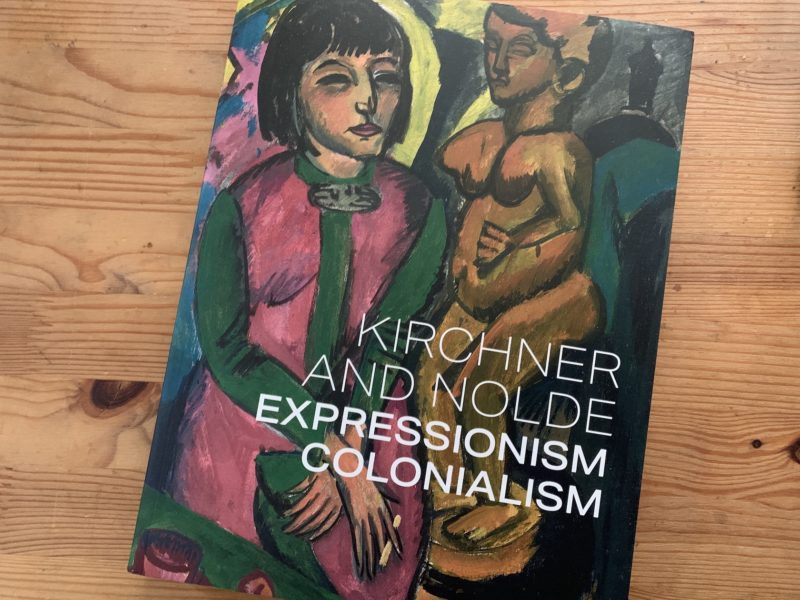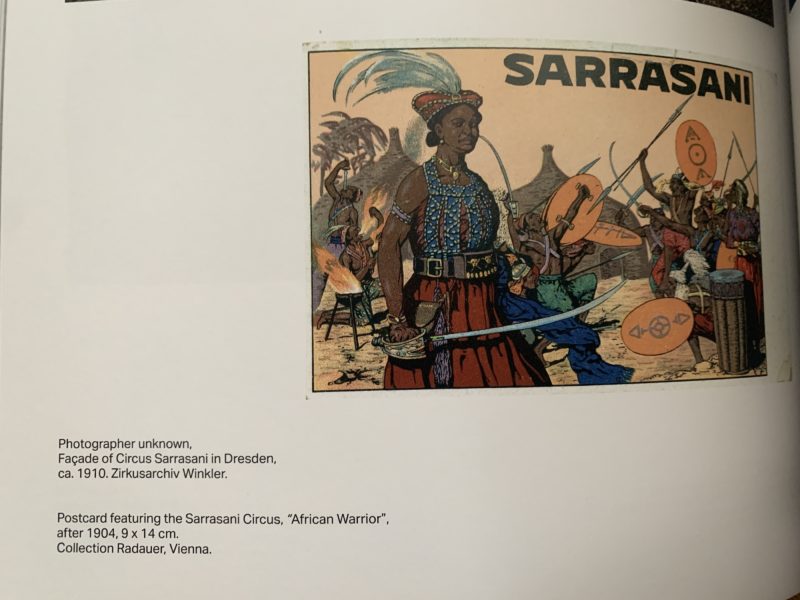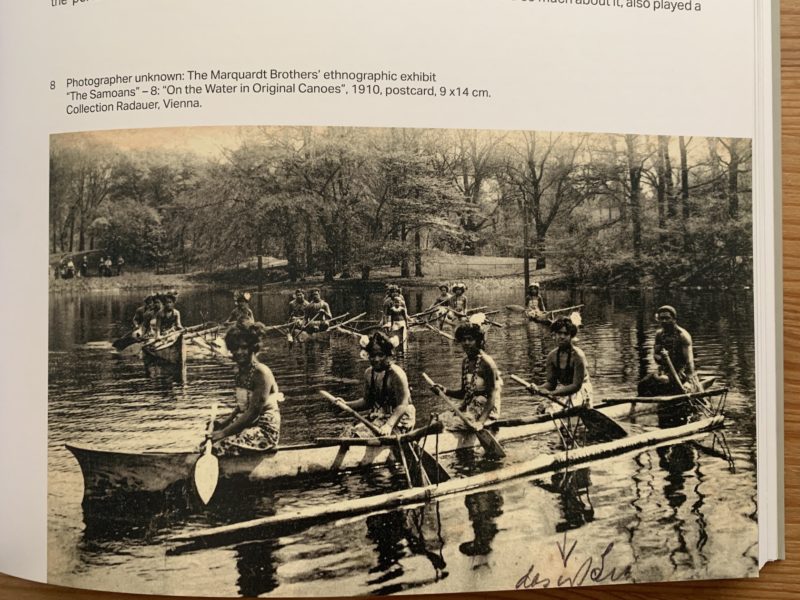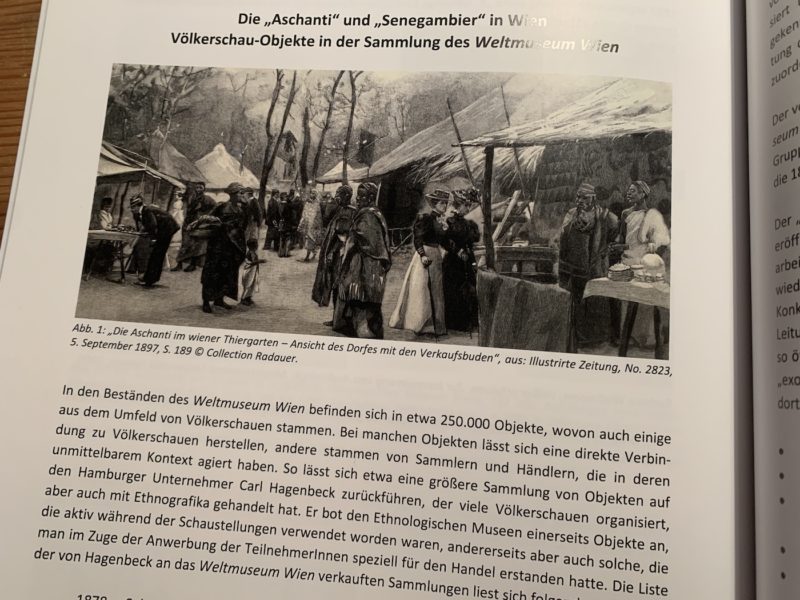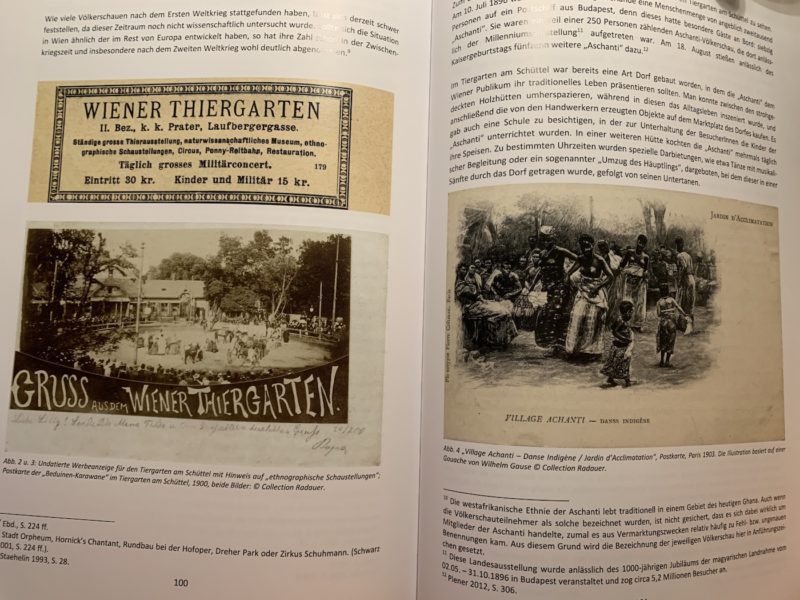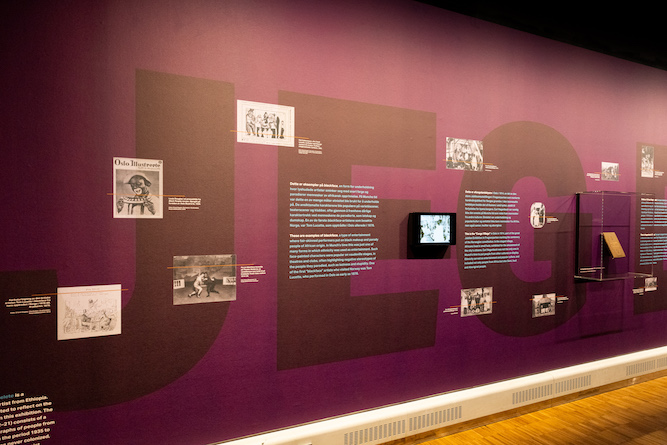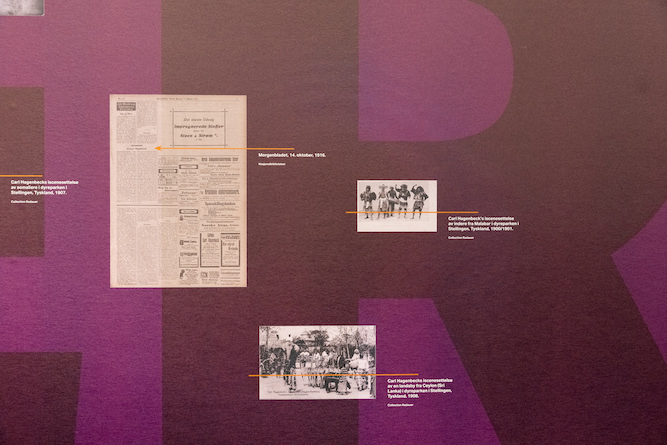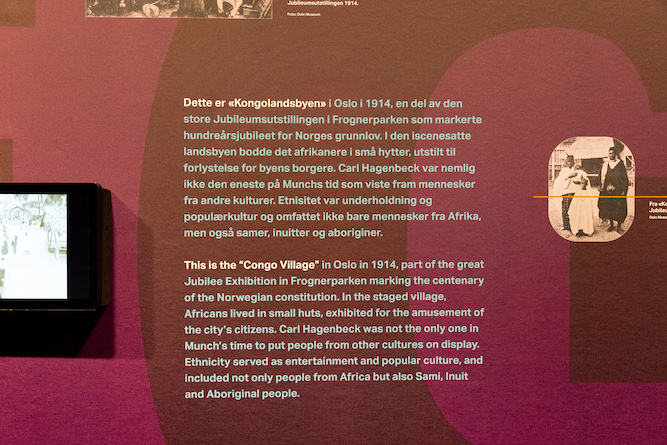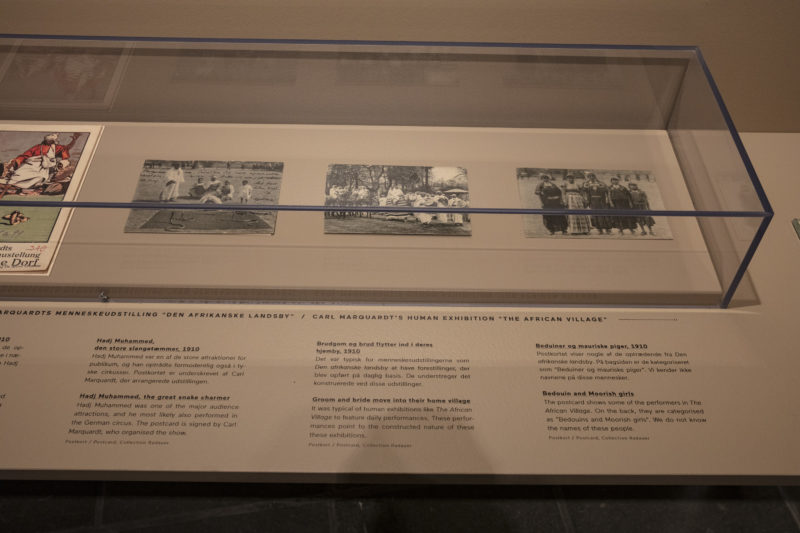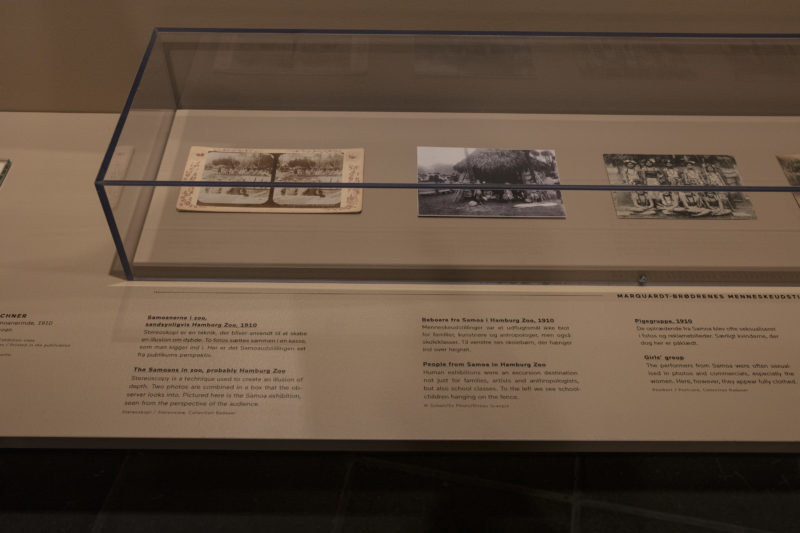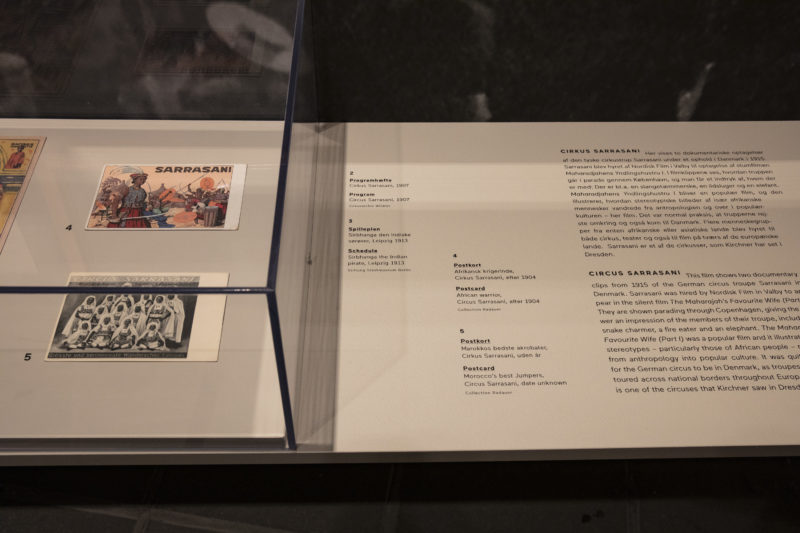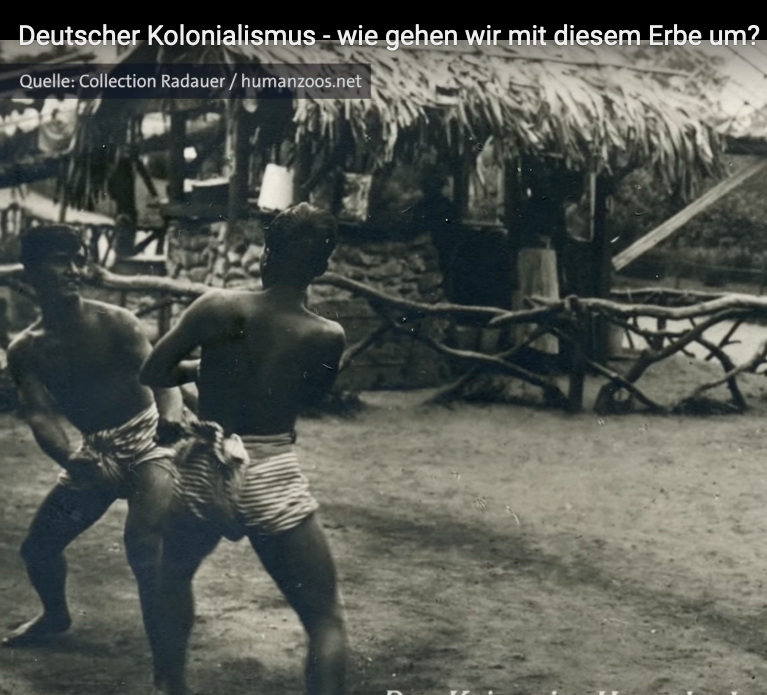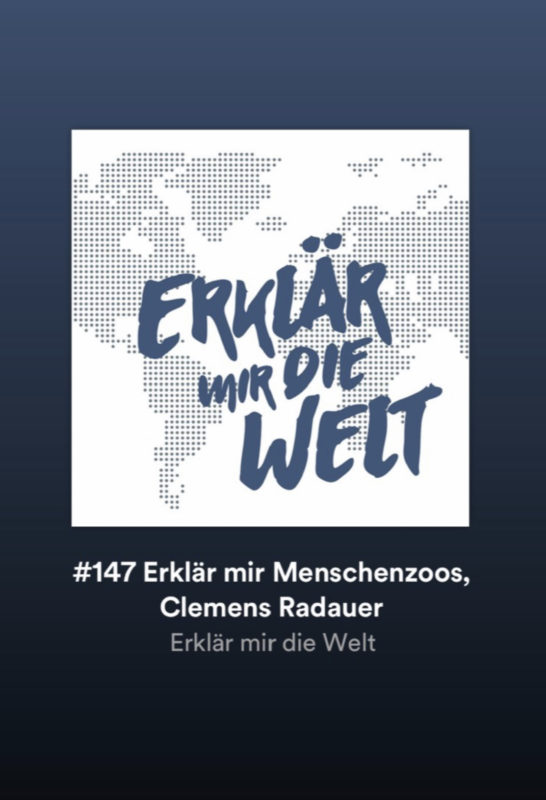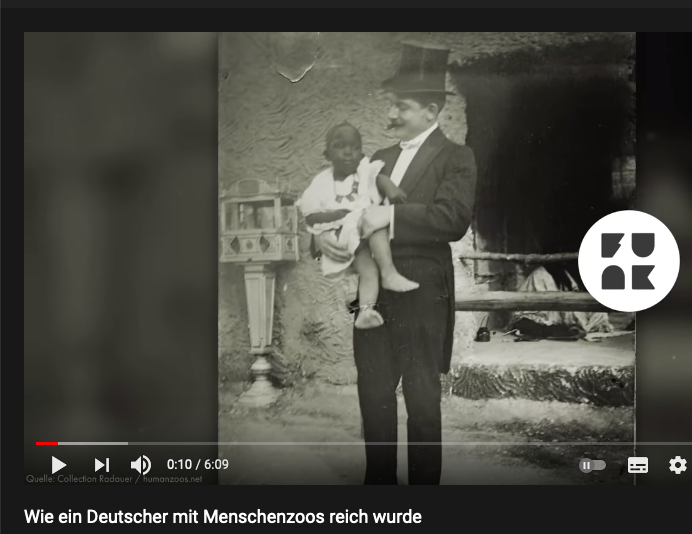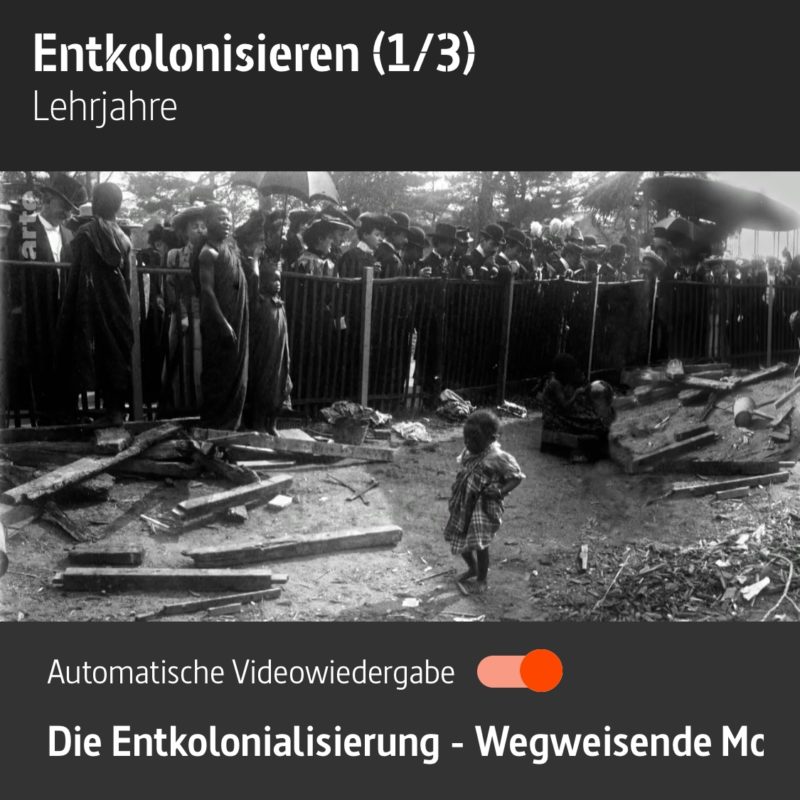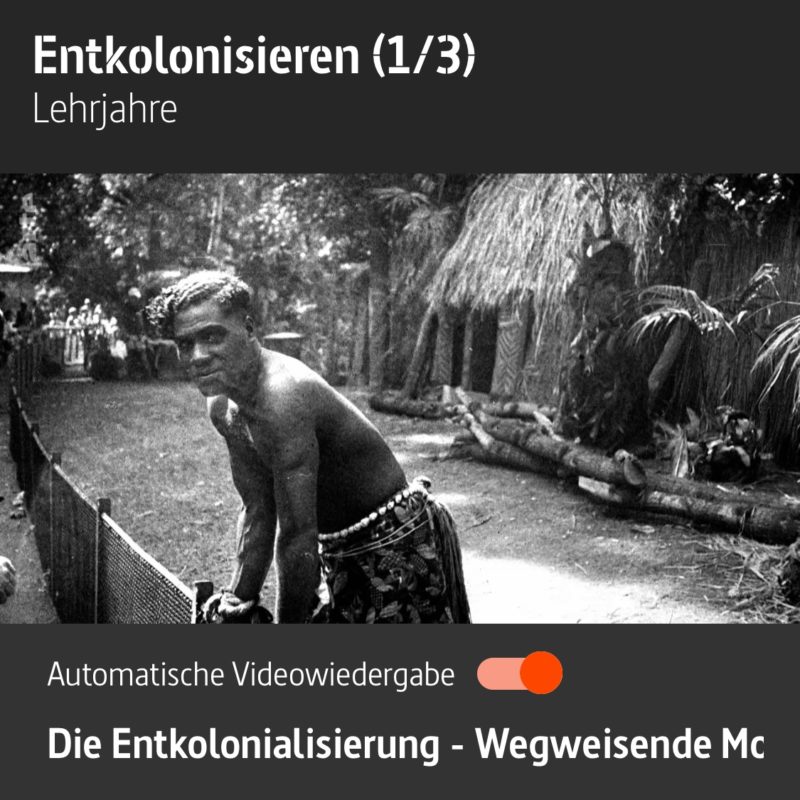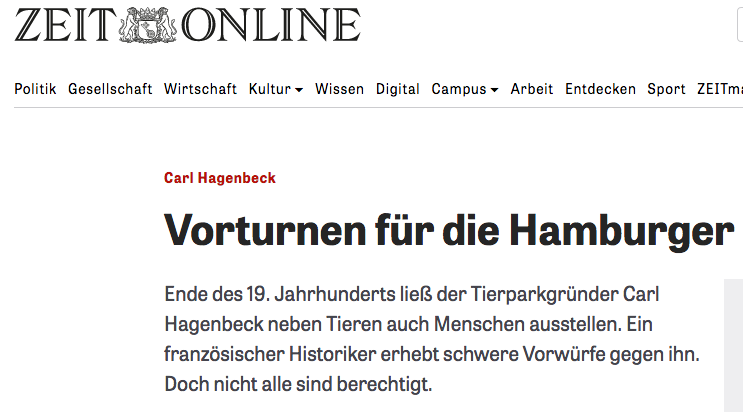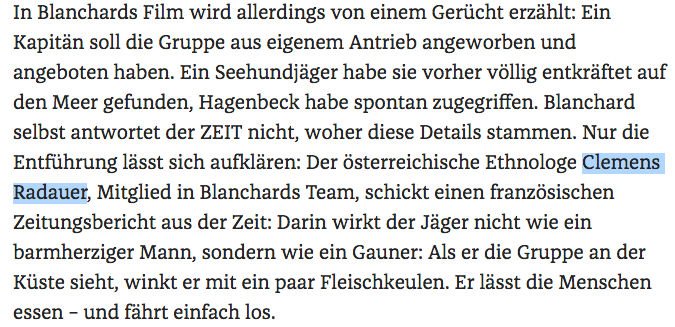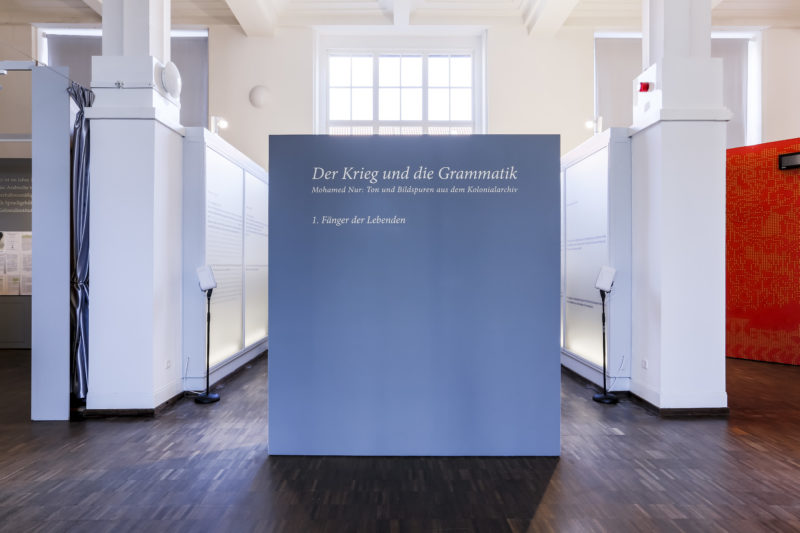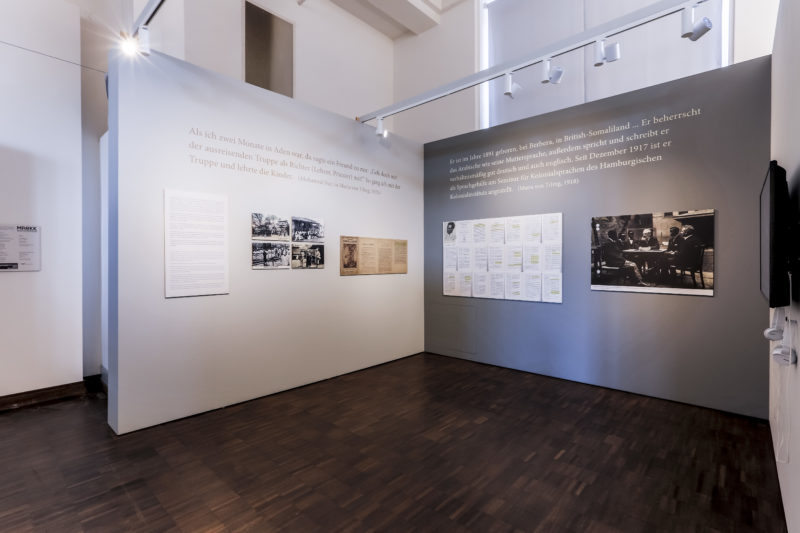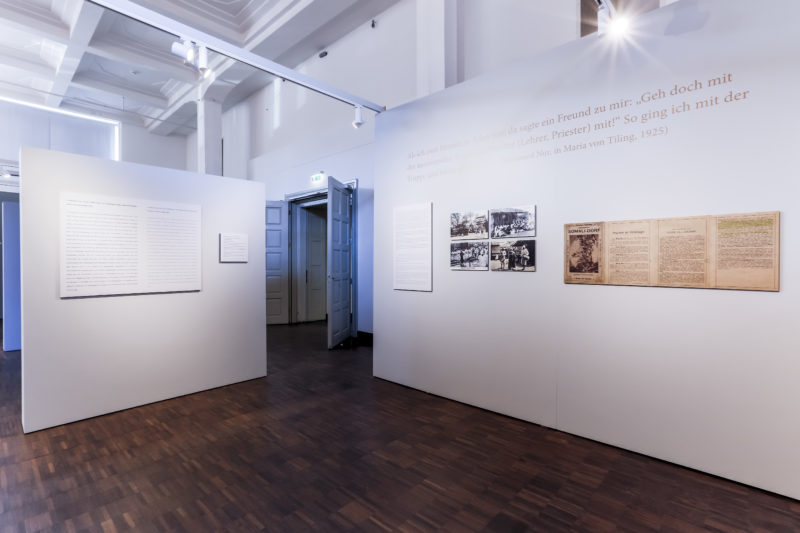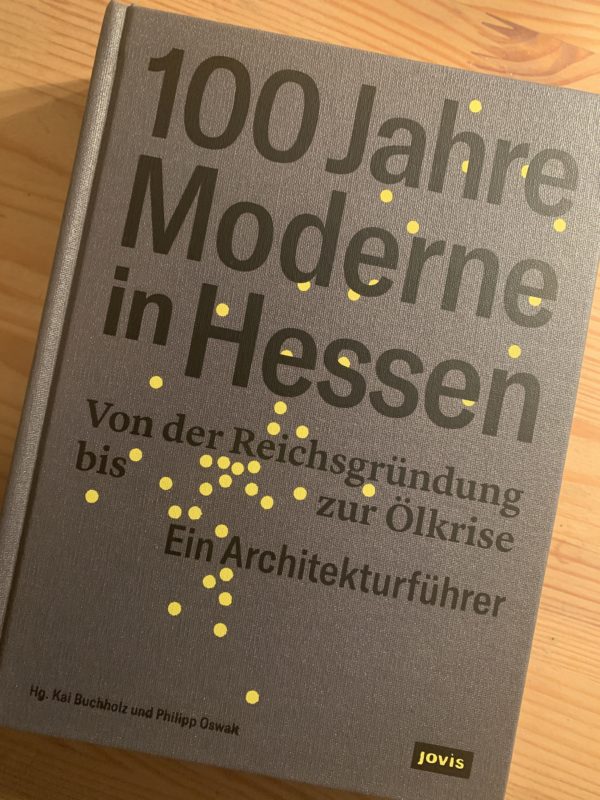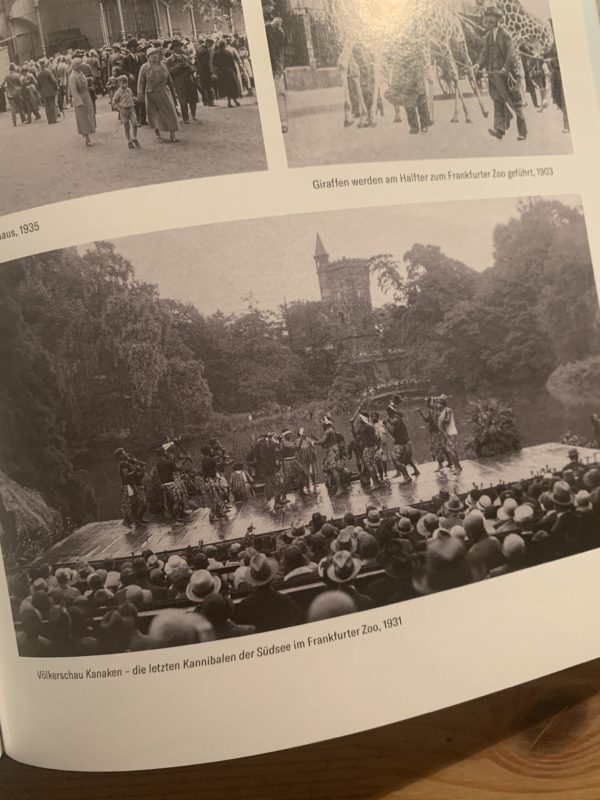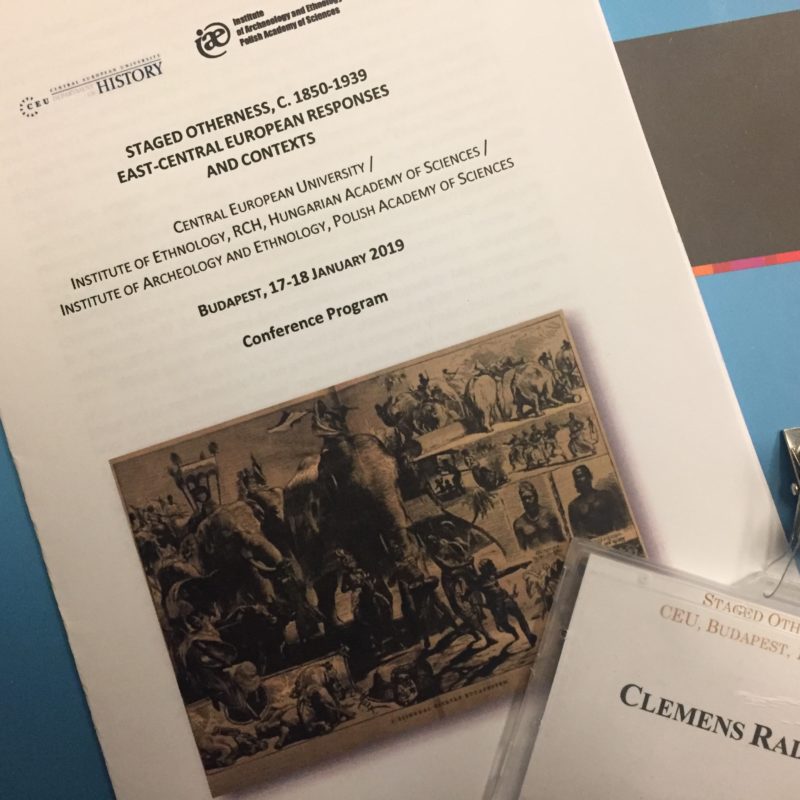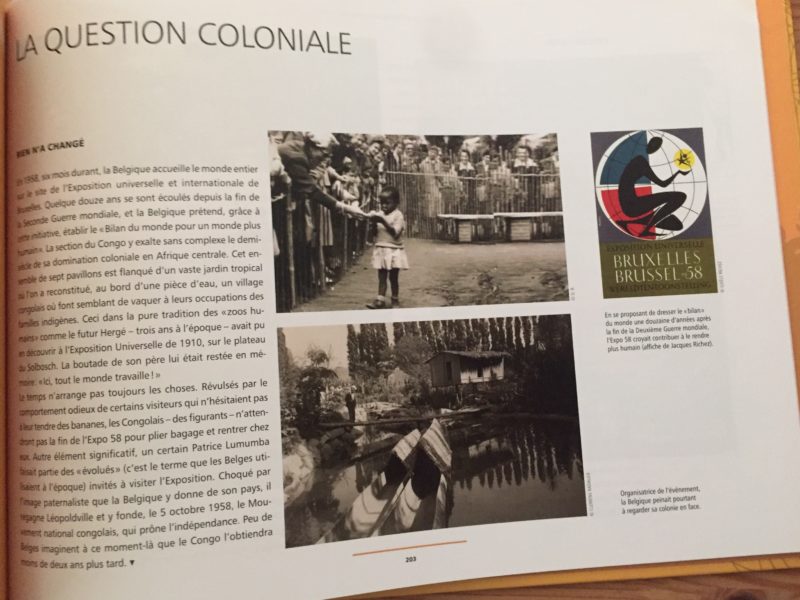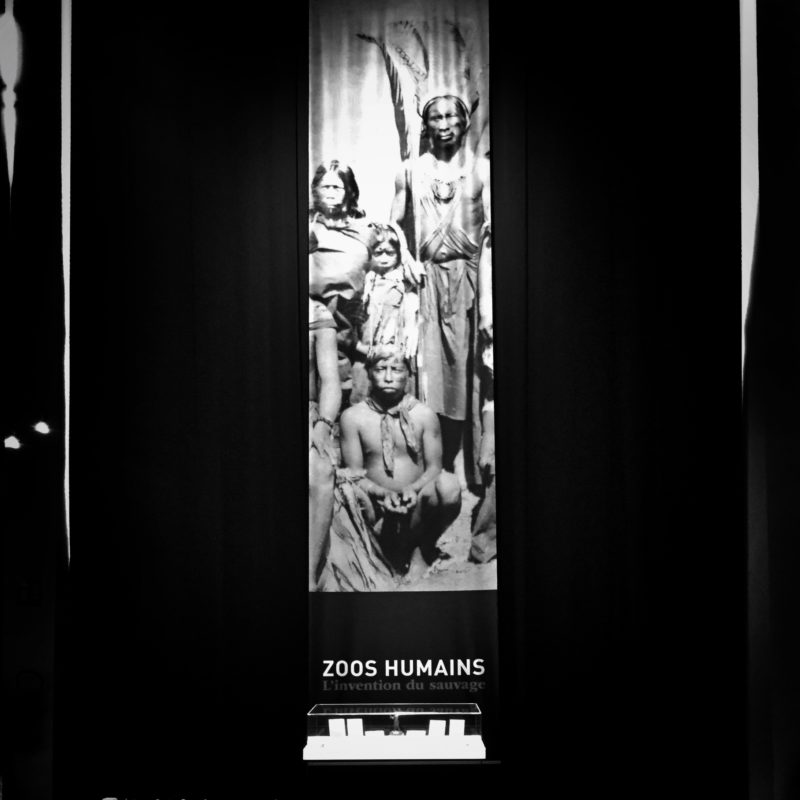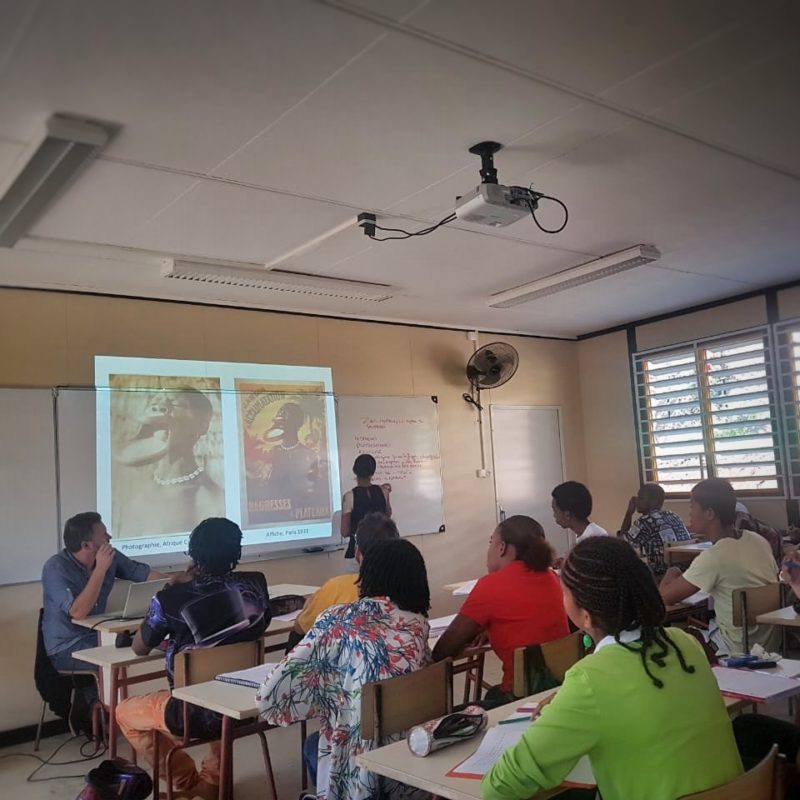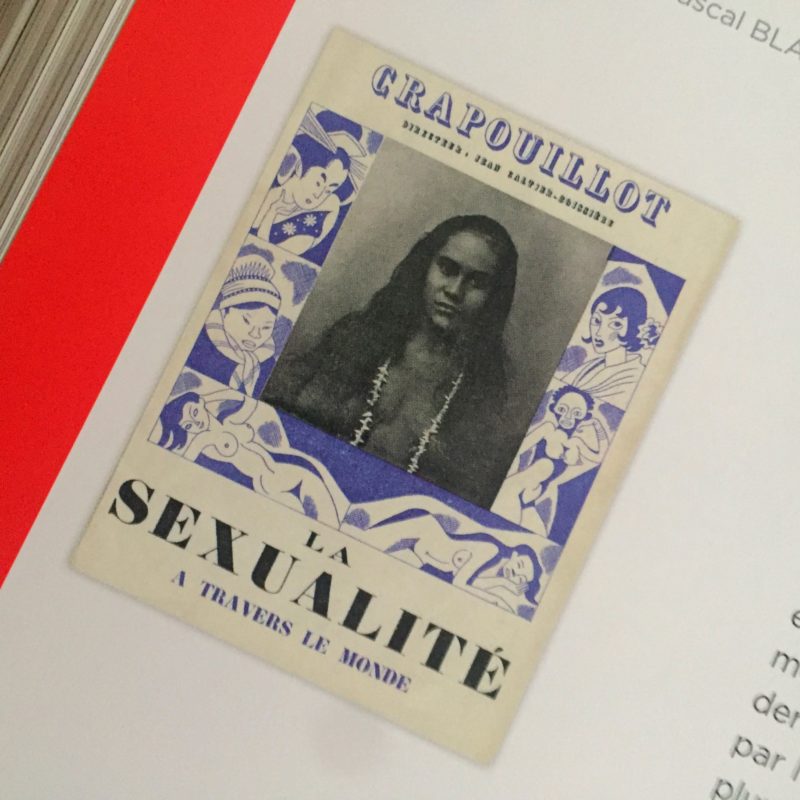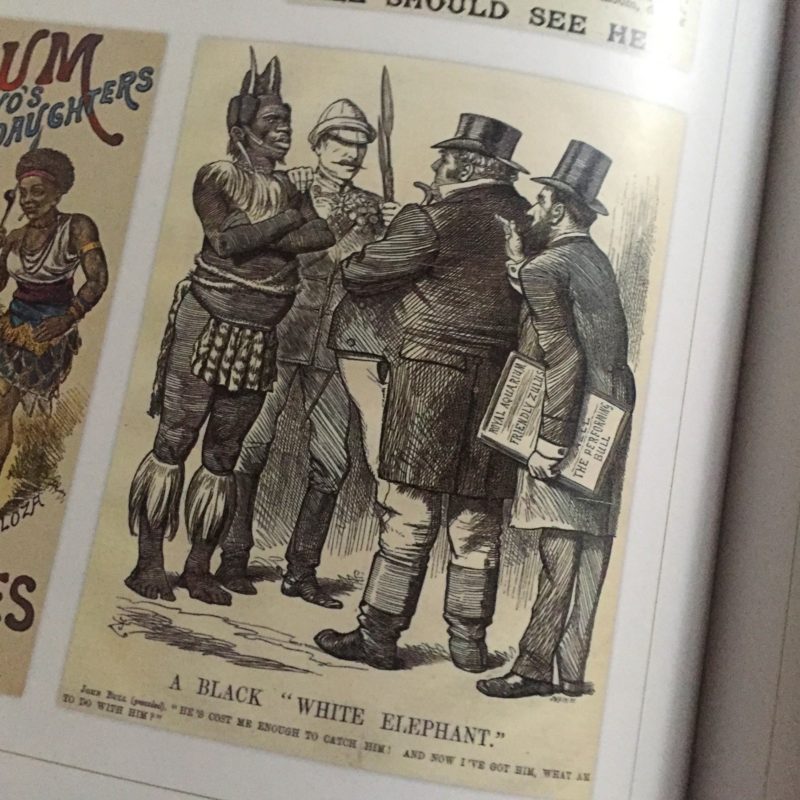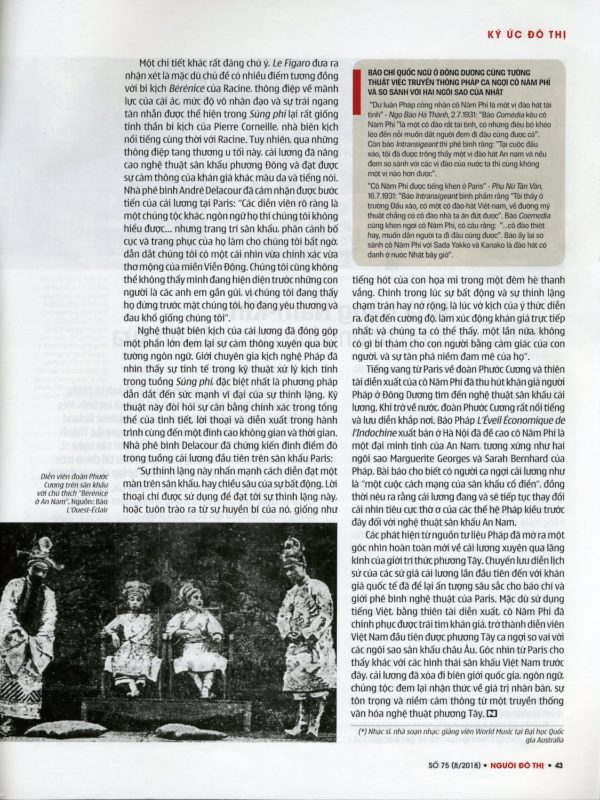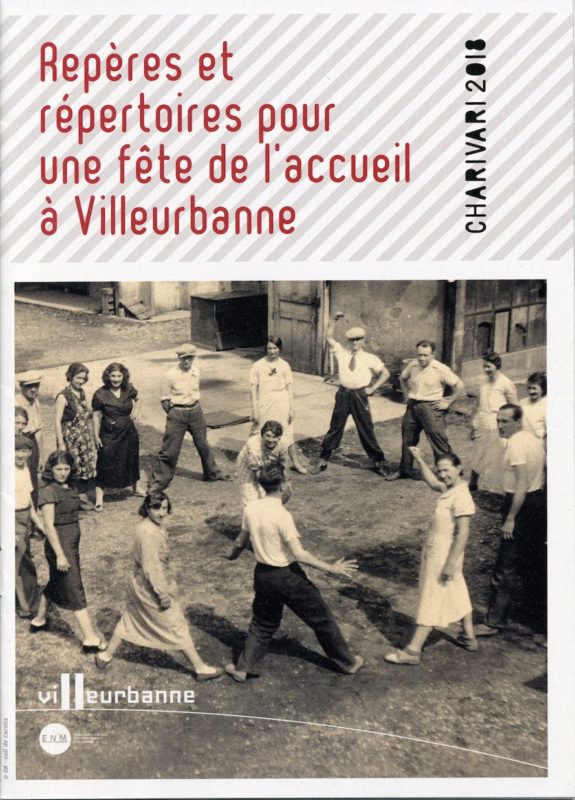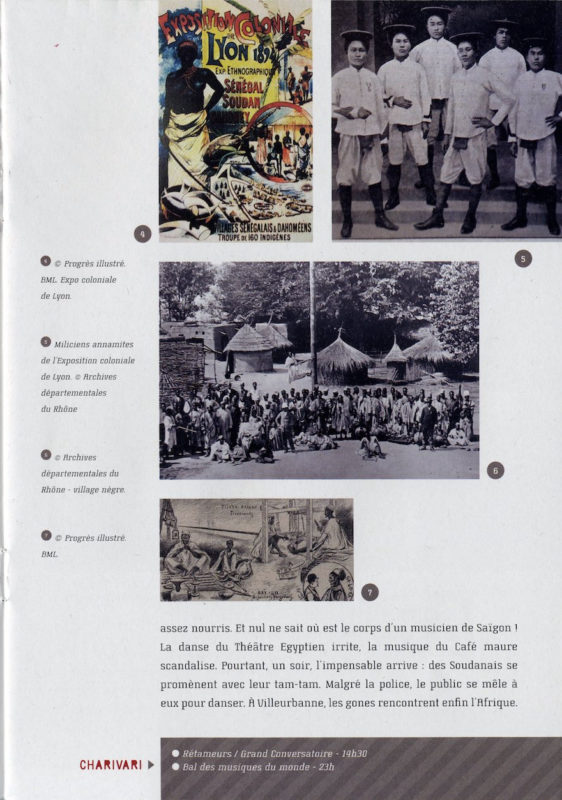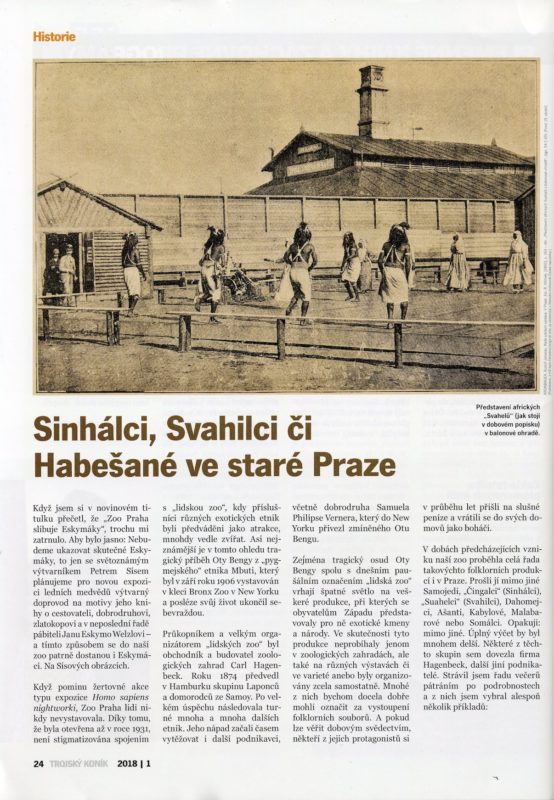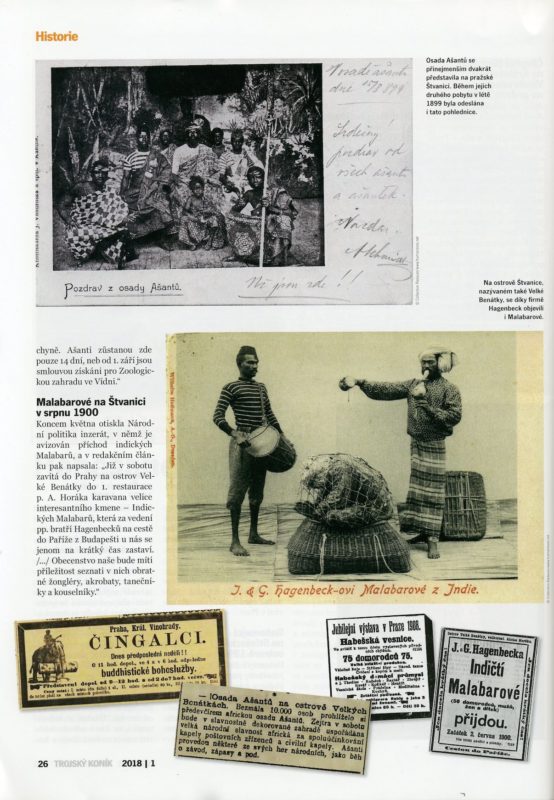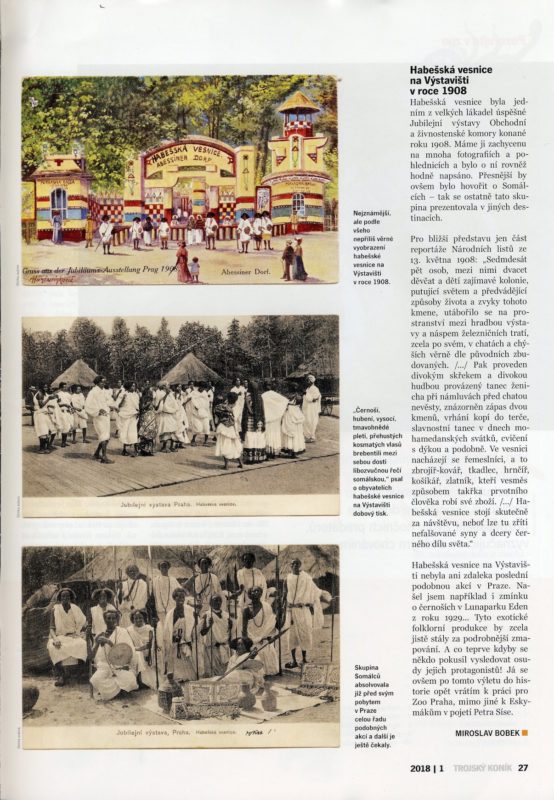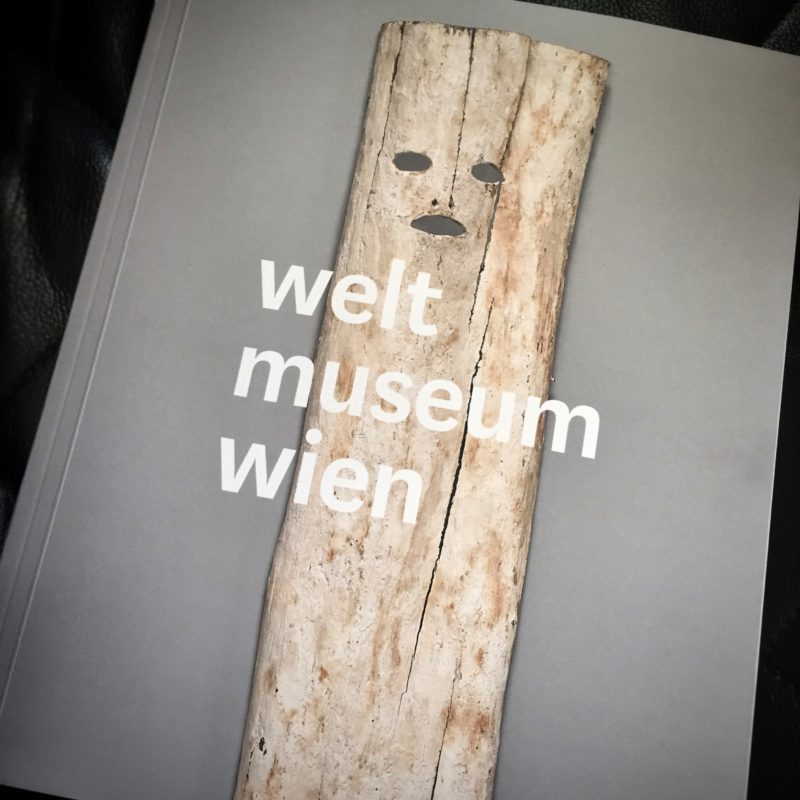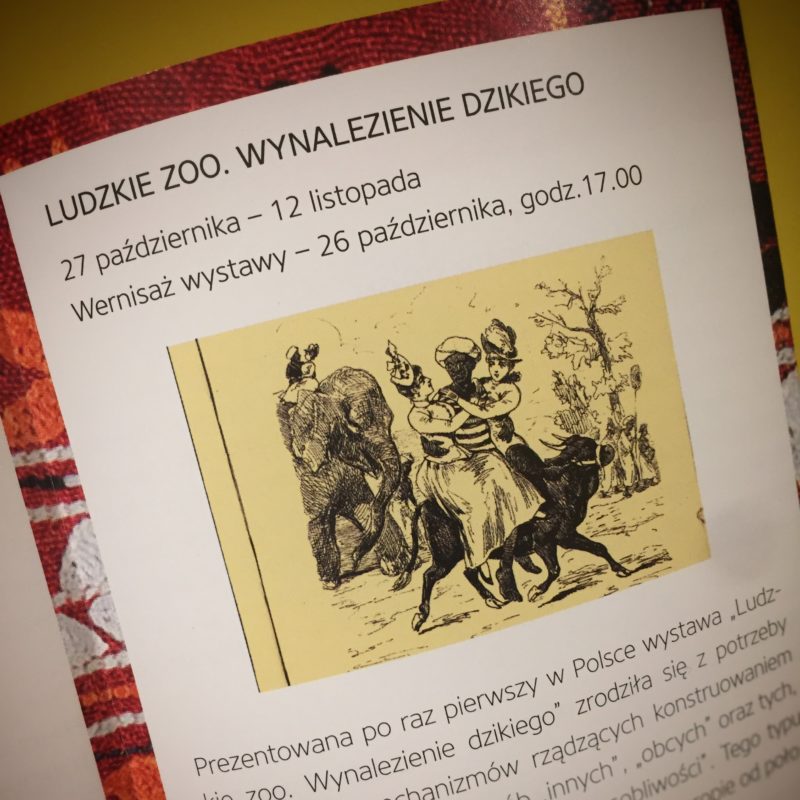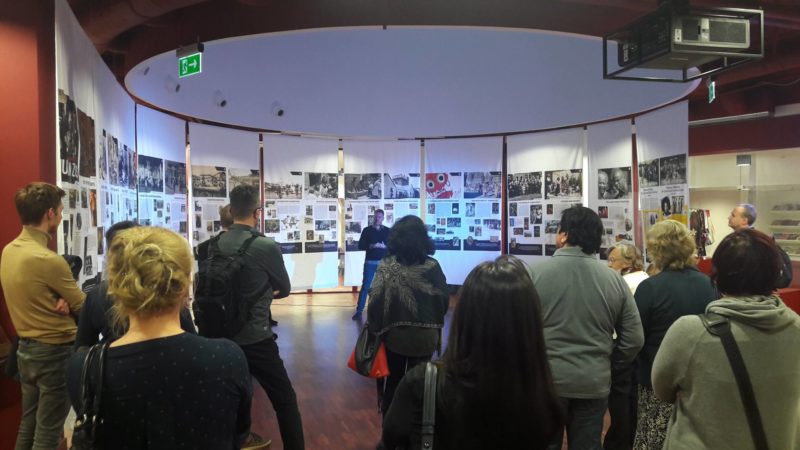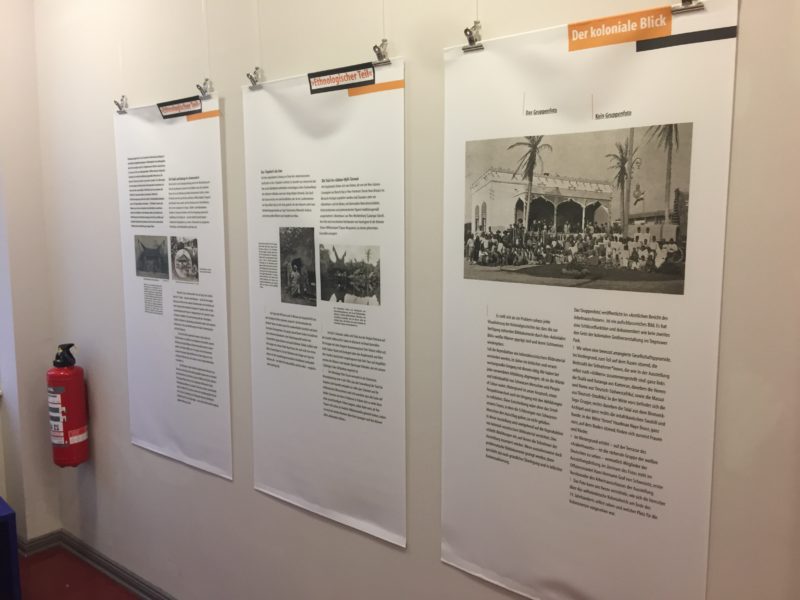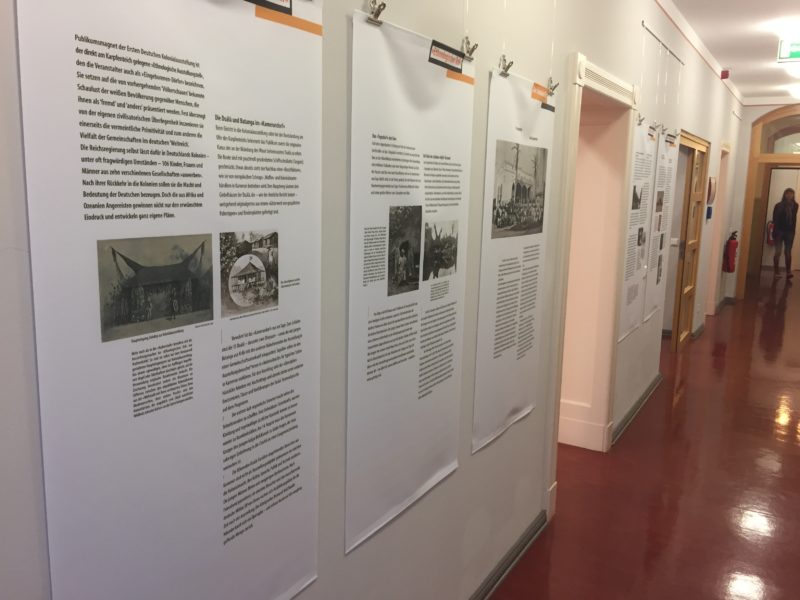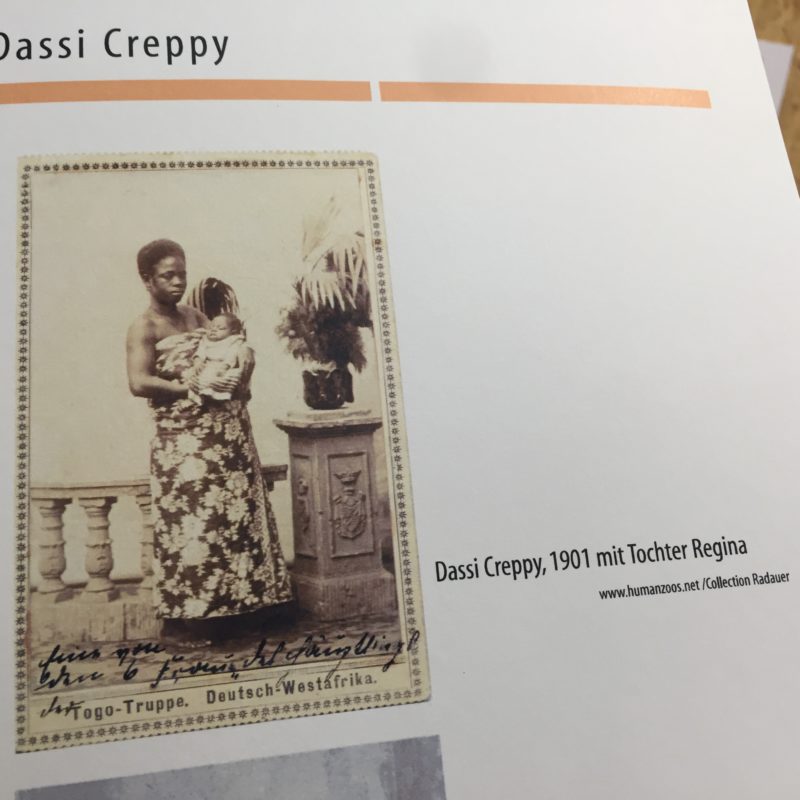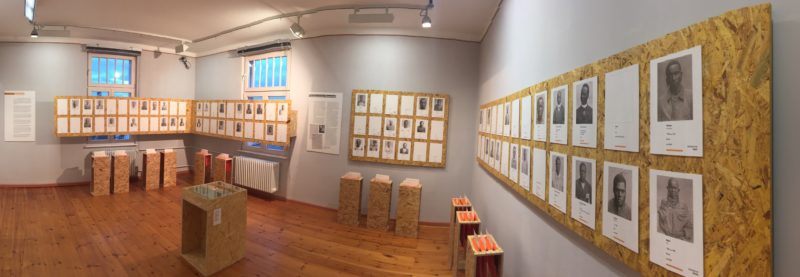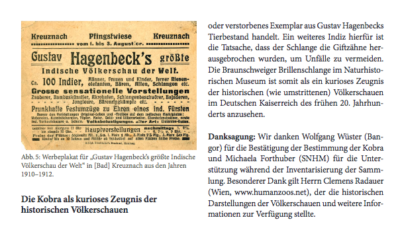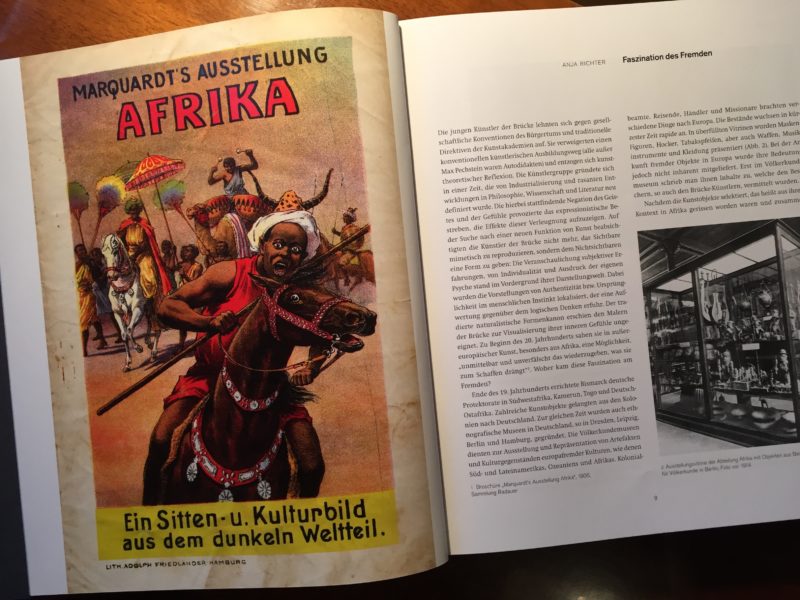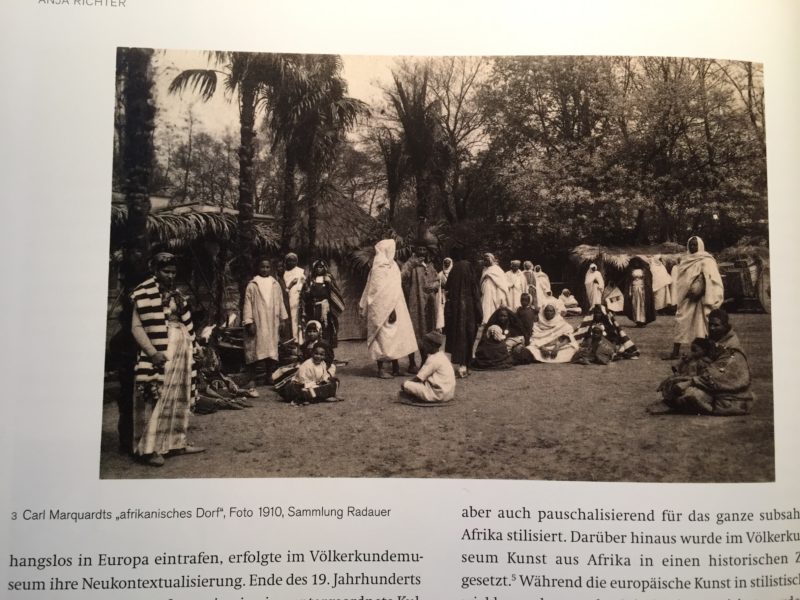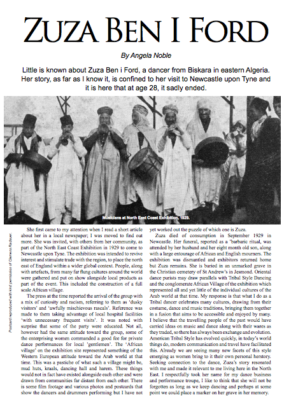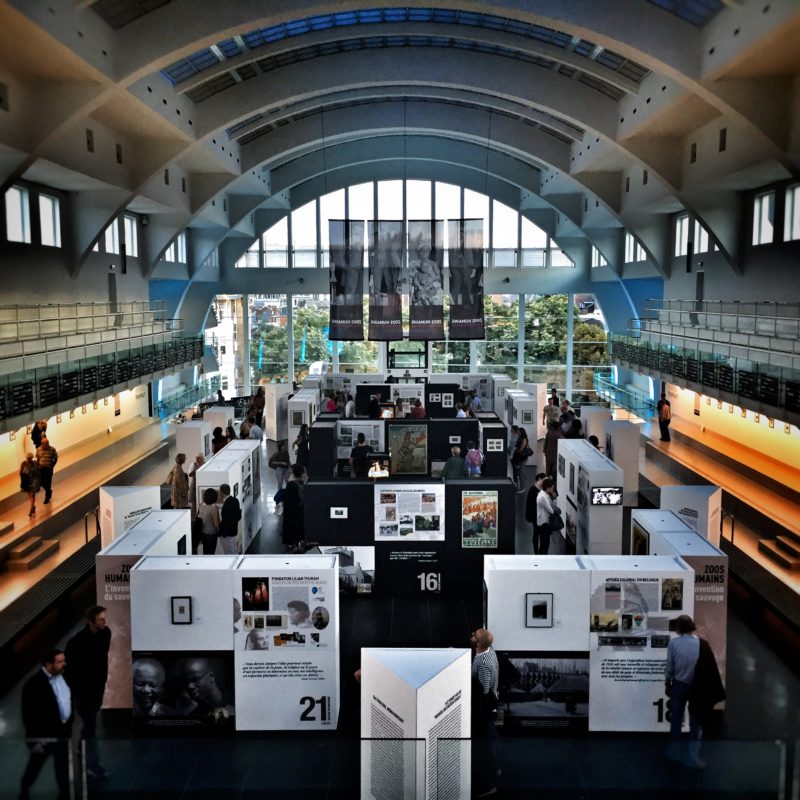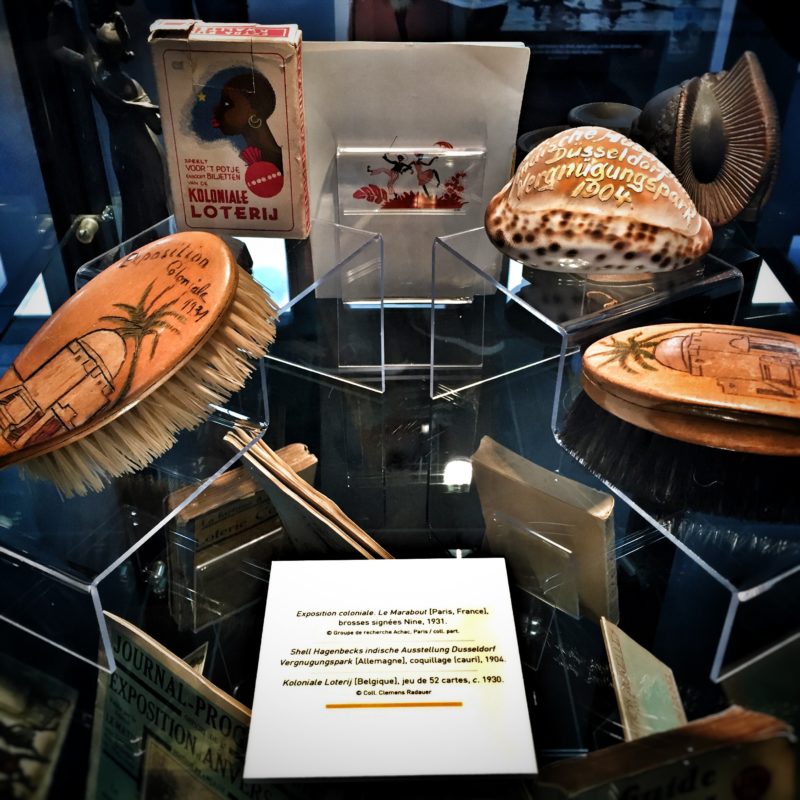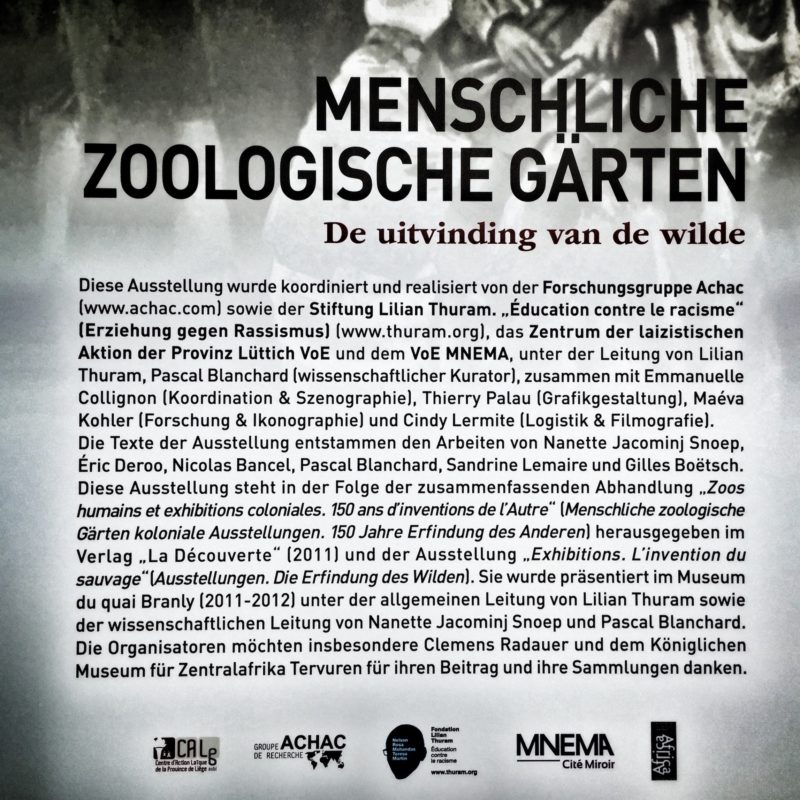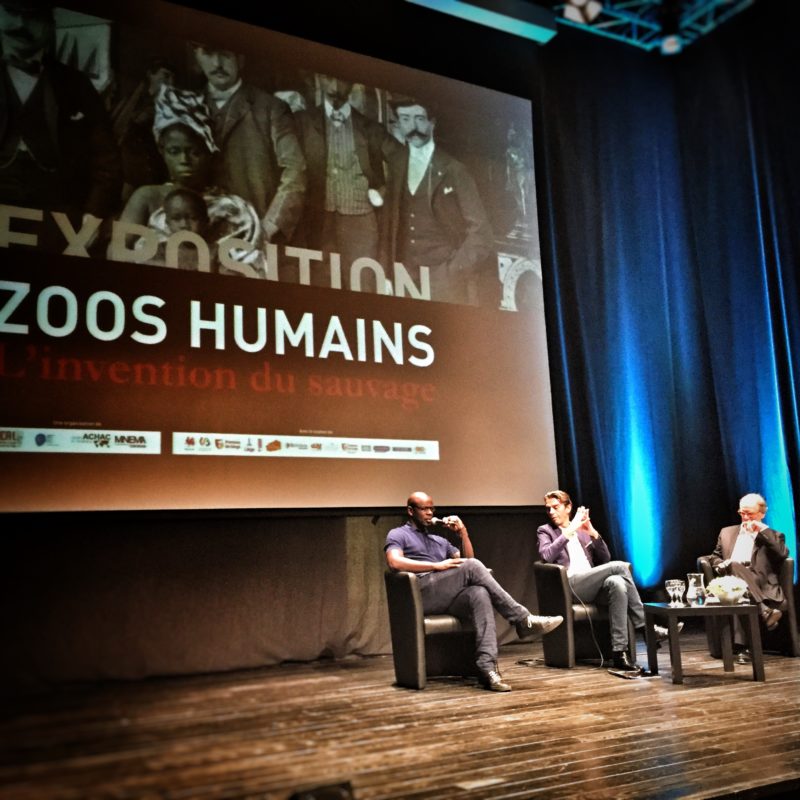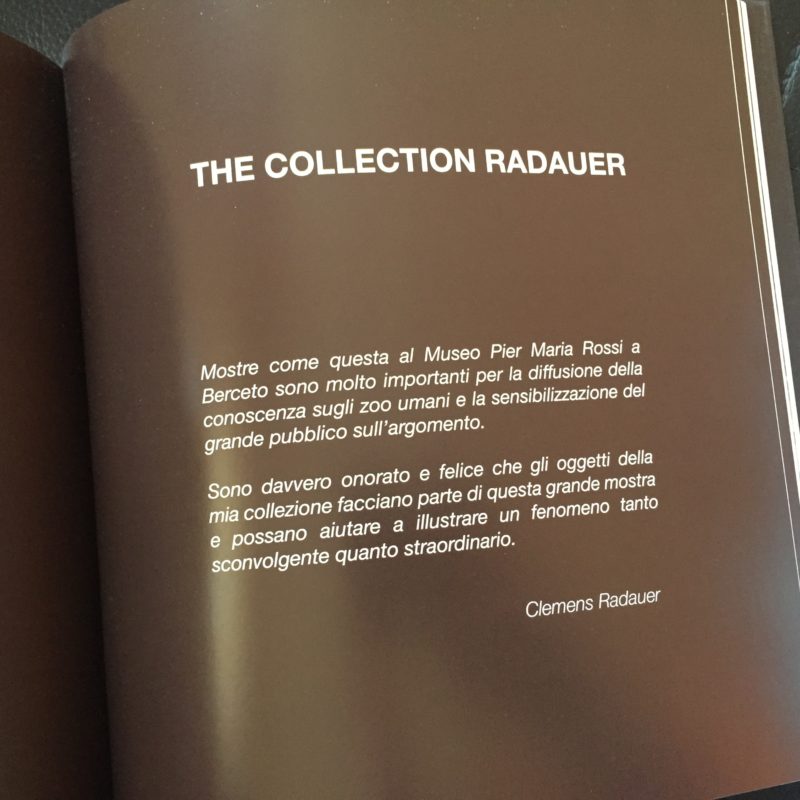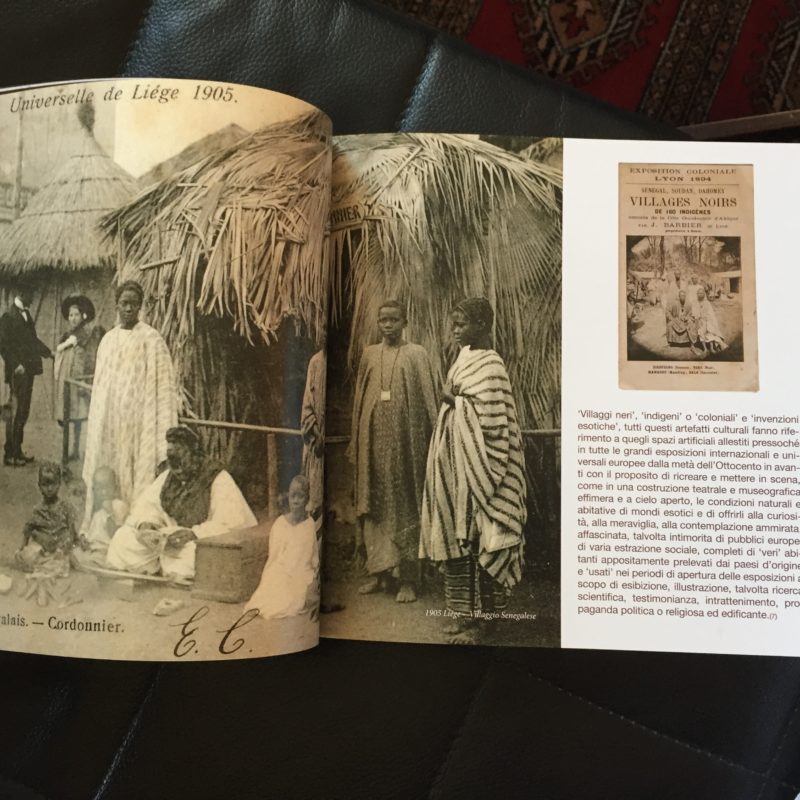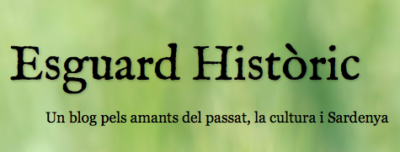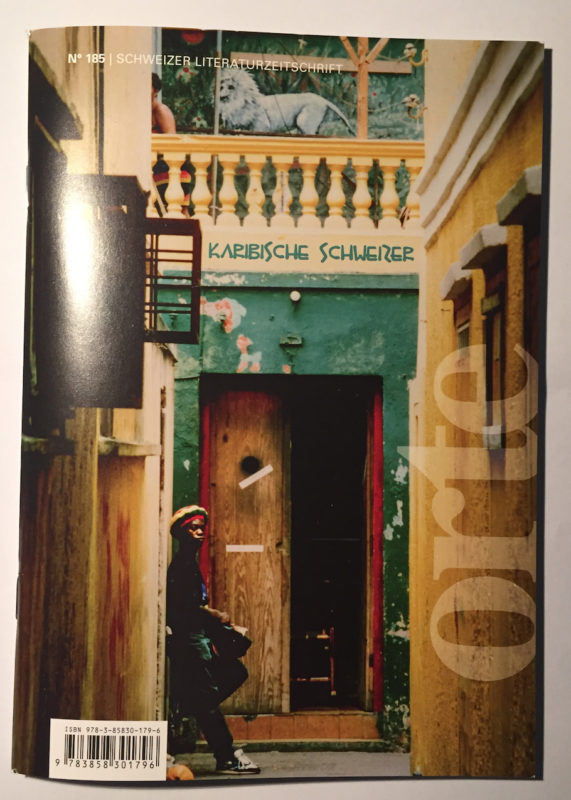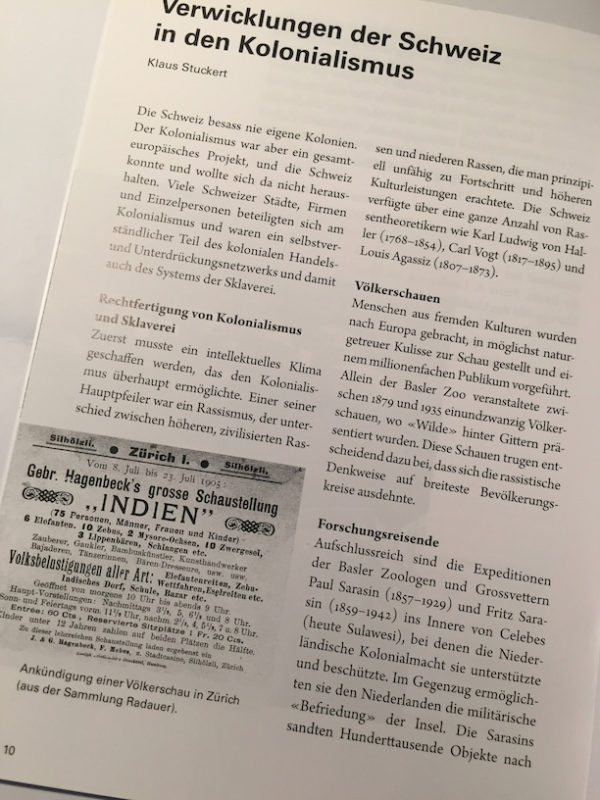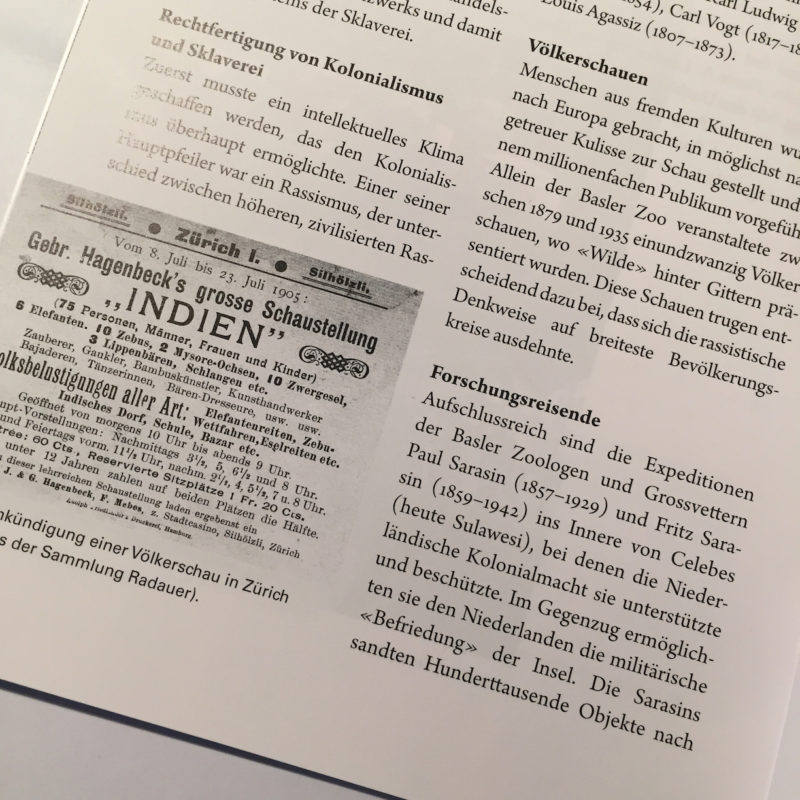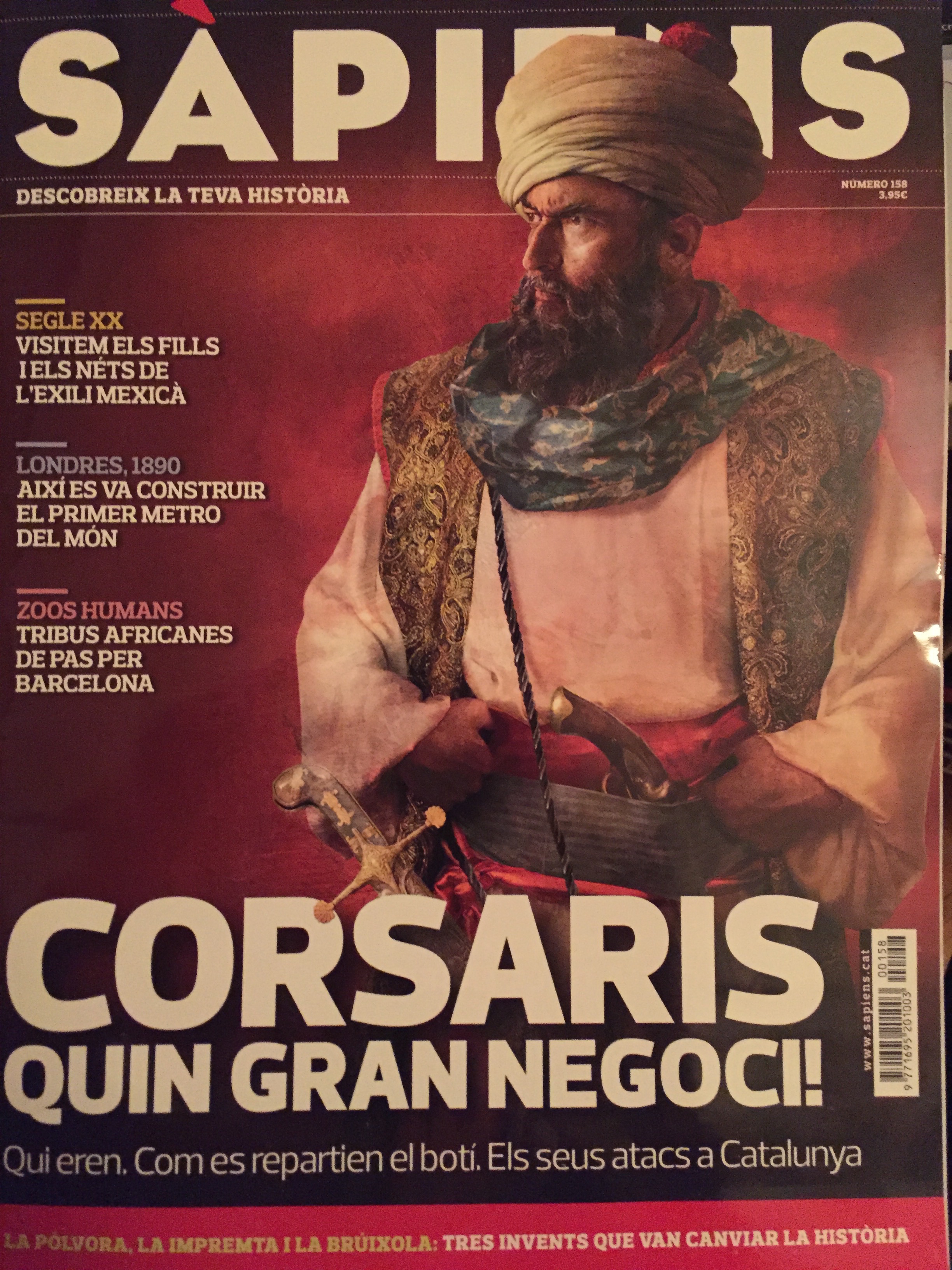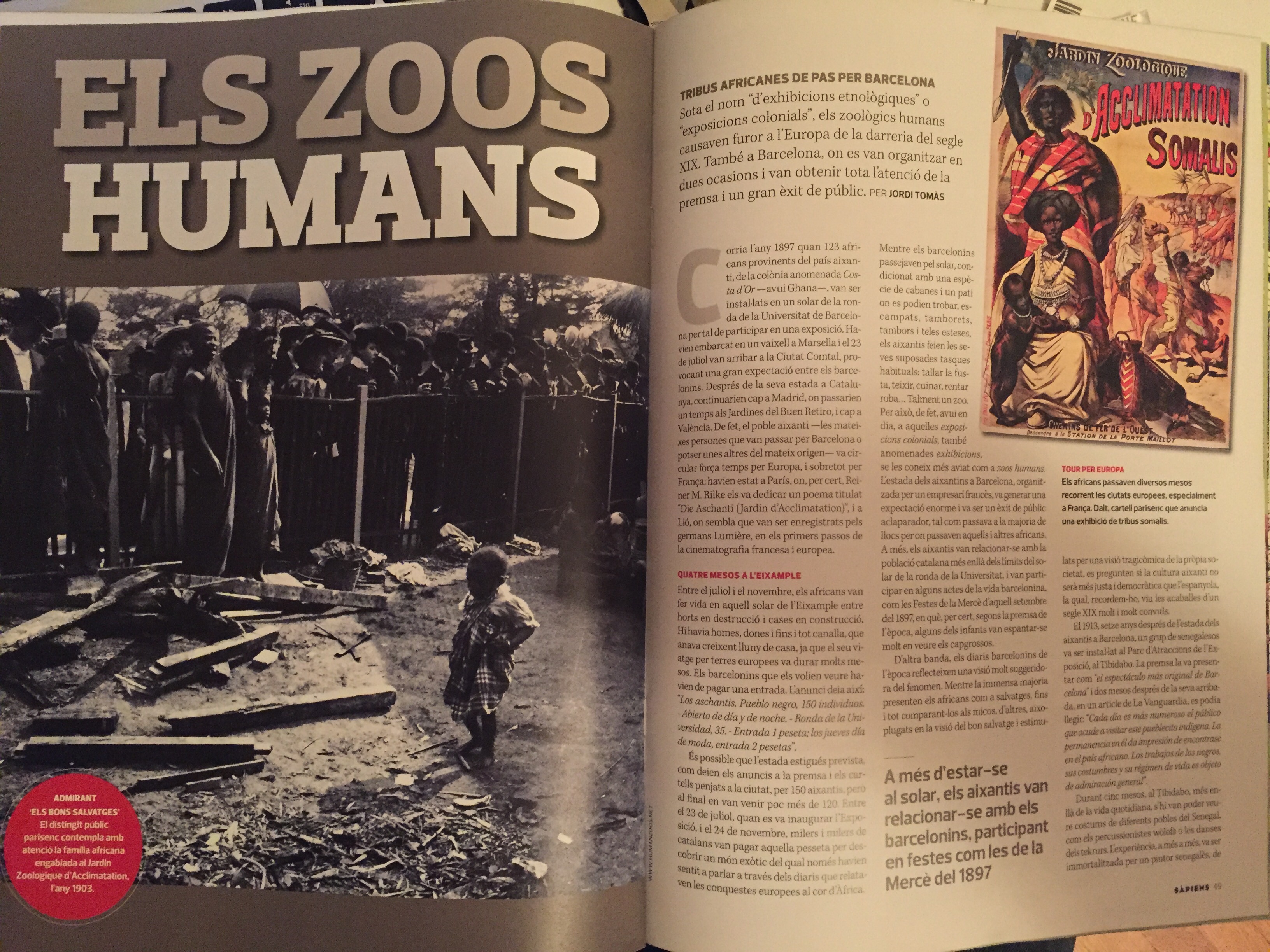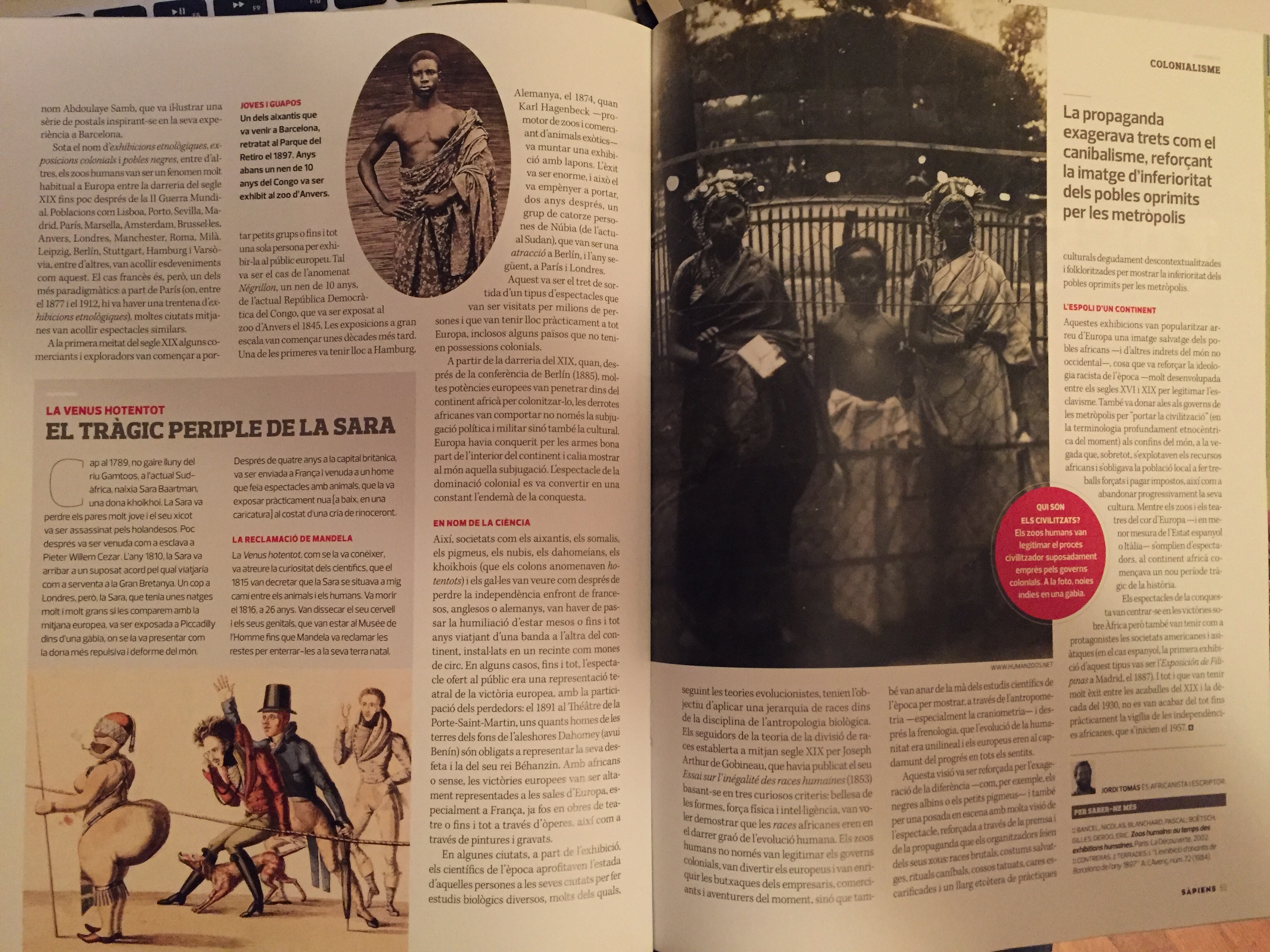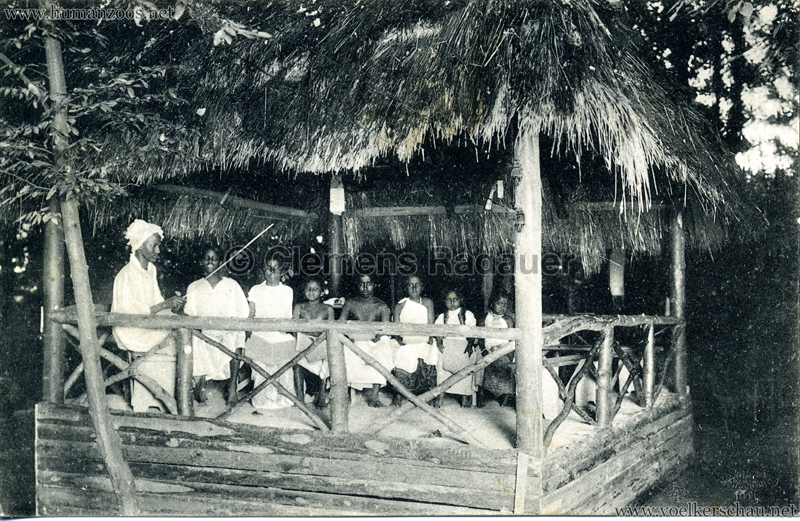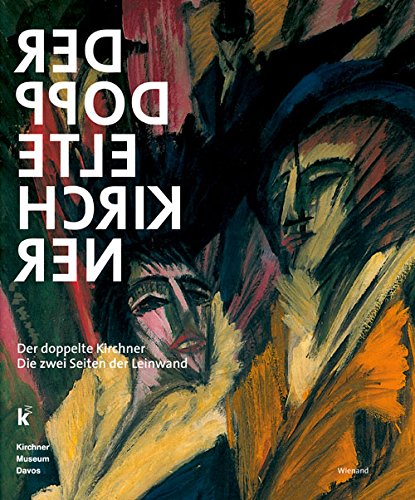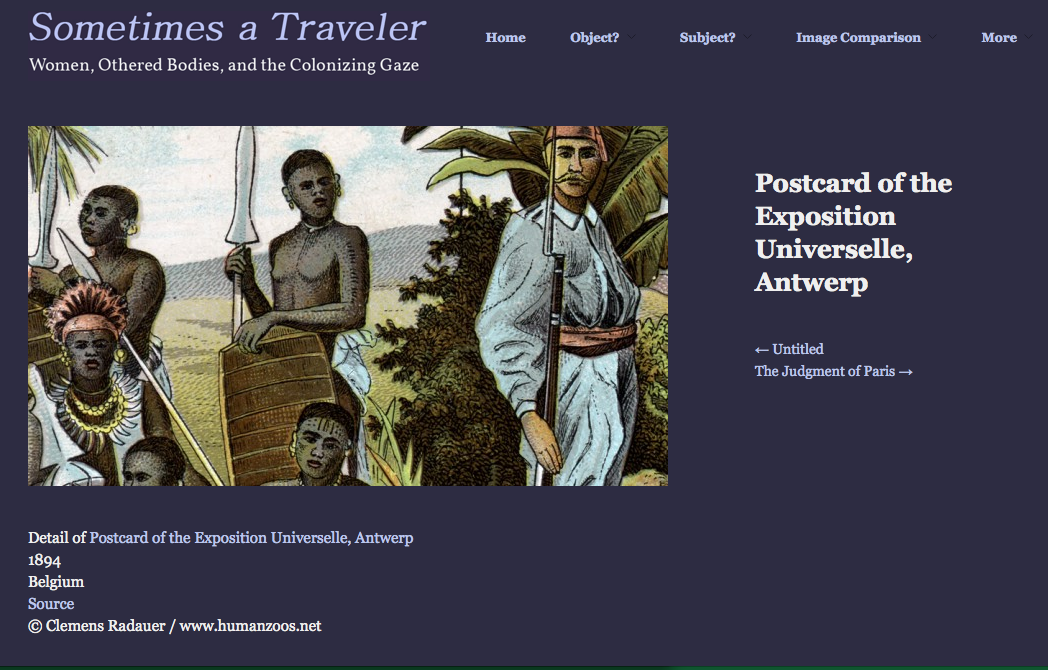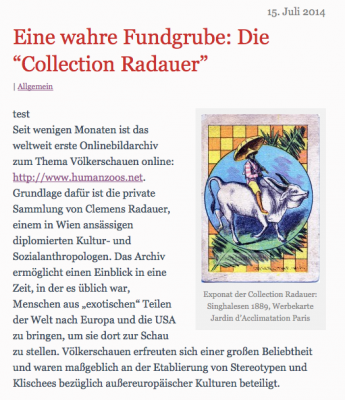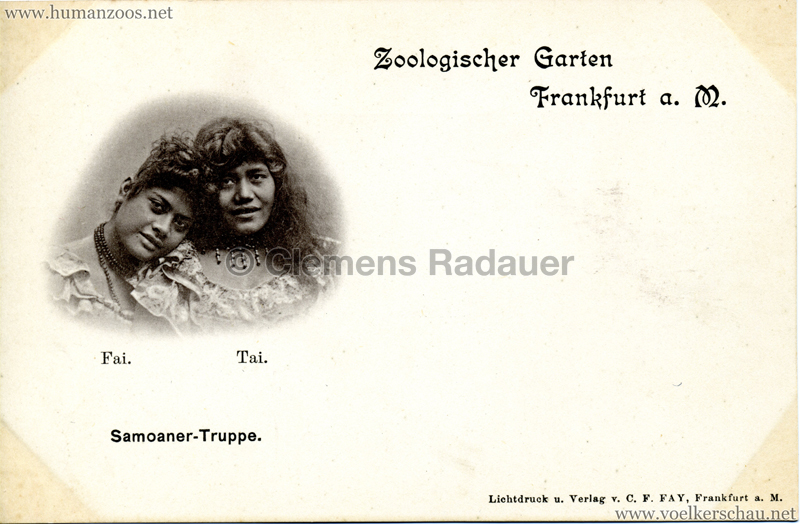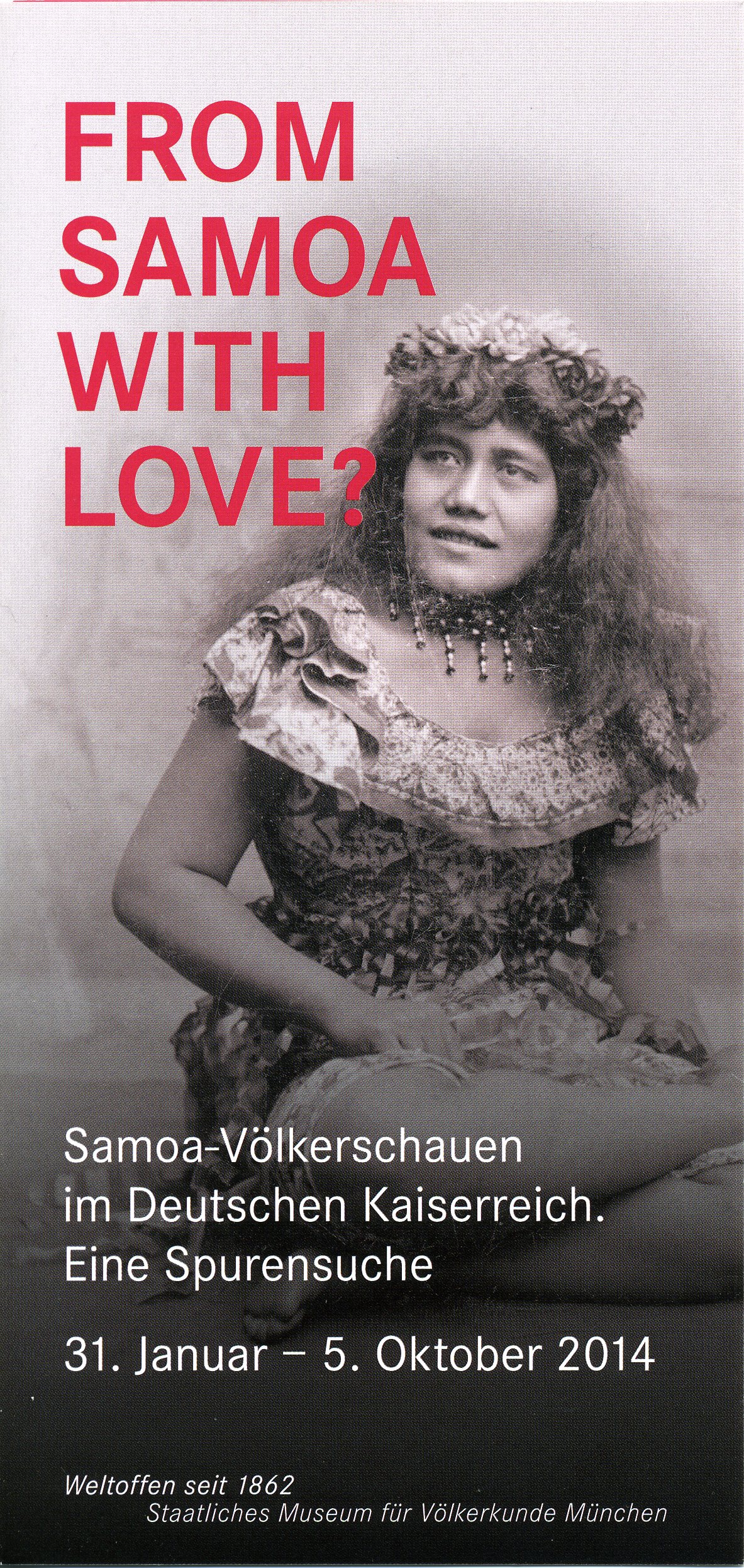Welcome to humanzoos.net – the first online archive on human zoos.
This homepage aims to be a guide for people interested in the phenomenon of human zoos, especially the visual remnants. Human zoos/ethnographic exhibitions took place roughly from the 1860ies to the 1960 and are a product of the colonial aera. Although most participants had contracts and were paid acordingly, it is important to emphasize that the contracts were concluded within colonial power structures and were thus asymmetrical. The shows were staged according to European stereotypes of the time and the related publicity material often perpetuated the racist, sexualised and prejudice imagery.
All material shown on this site is shown for scientific purposes only. It is intended to help students, teachers, scholars, reporters, artists and anybody else interested in the phenomenon with their research in providing context, visual aid & help with dating. Knowledge about such colonial & racist phenomena of the past is important & necessary in order to understand post-colonial power structures we live in today, overcome manifested stereotypes & tackle racism. In order to spread this knowledge the Collection Radauer cooperates globaly with students, researchers & organizations (such as ACHAC, Fondation Lilian Thuram, etc.) to aid them with their research, consult curators & supply objects for exhibitions as well as images for publications.
Some material of the archive contains nudity, racial stereotypes and racist language/images.
The core of this archive is the Collection Radauer consisting of over 3000 postcards, photographs, publicity materials, newspaper articles and other items linked to the exhibition of “exotic” people in Europe and the USA.
The Welcome page also includes the “news” section (below)
The Human Zoos page features an introduction on the topic of human zoos (will be extended soon)
The Collection Radauer page allows access to the archive sorted by different categories
The Bibliography page contains recommended literature on human zoos and the Links page links to related articles & pages
15.12.2023
the “NOVARA 10 – Zwischen “Südsee” und “Sea of Islands – Beispiele der Selbst- und Fremdrepräsentation Ozeaniens” edited by Hannah Dittmer, Irina Eder, Elisabeth Worliczek & Igor Eberhardt was presented. It includes an article by Clemens Radauer about “human zoos” from Oceania in the German speaking countries and some previously unpublished images from touring groups from Oceania.
28.11.2023
The documentary “Britain’s Human Zoos” is aired on Channel 4. It shines a light on the history of so called “exotic” groups that performed in the United Kingdom by focussing on a few specific biographies. Very well narated by acclaimed Somali-British author Nadifa Mohamed the tragic story of this phenomenon is highlighted. The documentary features 26 images from the Collection Radauer.
05.11.2023
The Stadtmuseum Dresden opens the exhibition “MENSCHENanSCHAUEN. Von Blicken zu Taten” as a follow up to the publication mentioned earlier. It is the first large exhibition in a German museum, that focuses on the phenomenon of “human zoos”. The exhibition also contains 5 images from the Collection Radauer.
15.07. – 08.10.2023
The solo exhibition of Taiwanese artist Chia en Jao “CdV” is opened at the Taipeh Fine Arts Museum. In several of his art installations the artist refers to the Japan-British Exhibition that took place in London in 1910. Once again the artist cooperated with Clemens Radauer & the Radauer Collection for his exhibition.
05.04.2023
The book “Menschen anschauen – Selbst- und Fremdinszenierungen in Dresdner Menschenausstellungen” is published by the Stadtmuseum Dresden. It contains several articles that look at different aspects of colonial history in the city of Dresden, including one by Clemens Radauer about the cooperation of a Kalmyk priest with the curator of the ethnographic collection. In 1883 while in Dresden to perform with a “human zoo”, the gelong (priest) was invited to review a collection of Kalmyk items in the museum collection. The publication also contains an interview with Samatar Hirsi – great grandson of Hersi Egeh who helped with Carl Hagenbeck with the organization of groups fom Somaliland – about the family history in the “human zoo” context and how it has been told within the family.
10.01.2022
The book “Staged Otherness – Ethnic Shows in Central and Eastern Europe 1850 – 1939” edited by Dagnosław Demski & Dominika Czarnecka features several images from the Collection Radauer. This publication is the result of two conferences that took place 2017 in Warsow & 2019 in Budapest that concentrated on the human zoos/ethnographic exhibitions that took place in Central and Eastern Europe. The book offers a new perspective on this phenomenon due to a focus on regional specificities and rarely mentioned case studies. It thus fills important gaps in previous academic research and opens the field for many future examinations and analysis.
18.12.2021 – 06.03.2022
Taiwan based artist Chia-En Jao used several postcards & other items from the Japan-British Exhibition of 1910 for his installation called “Collection Radauer” at the Kaohsiung Museum of Fine Arts. The 1910 exhibition also included a so called “Formosa Hamlet” in which twenty six people of the Paiwan where exhibited. Chia-En Jao featured 14 postcards of these people as well as 4 photographs of the Japanese garden, a foldable souvenir booklet and 12 postcards of the so-called “Aino Home” – a staged Ainu village with several exhibited people.
A short video of the exhibition by Chia-En Jao:
09.11.2021
The Royal Museum for Central Africa in Tervuren (Brussels) opened the exhibition “Human Zoo. The age of colonial exhibitions” which with over 500 objects is the largest exhibition on the topic of human zoos/ethnographic exhibitions since the legendary exhibition “L’invention du Sauvage” at the Musée du Quai Branly in 2011. It is a great honor that over 100 objects in the exhibition are from the Collection Radauer and Clemens Radauer was also the scientific advisor of the exhibition.
26.10.2021
The Norddeutsche Rundfunk aired the short documentary “Menschen ausgestellt im Zoo – Das dunkle Kapitel Völkerschauen” on the topic of human zoos/ethnographic exhibitions. They interviewed three descendants of people who participated in human zoos and one descendant of an organizer of human zoos. The documentary features several images from the collection Radauer.
20.10.2021
The novel “Therese – Das Mädchen, das mit Krokodilen spielte” by German author Hermann Schulz features an image from the Collection Radauer on the cover. The book is about a woman born 1900 in Germany as the daughter of an African touring group who stays with German foster parents to keep her from whitnessing the stressful life on the road. Her life story is fascinating and offers a look into a politically changing Germany whitnessed by a young POC, who is looking for her parents.
01.10.2021
The Deutsche Museum in Munich has been researching the provenance of the objects in their ethnographic collection. During their search they found out that several items from Samoa were given to the Museum by the brothers Marquardt, who had been organizing human zoos for many years. In 1910 after a group of Samoans had returned home, the brothers Marquardt gifted several items used in their performances to the museum, including two outriggers. Bernhard Wörrle is a curator at the Deutsche Museum and wrote an article on these objects.
04.09.2021
In cooperation with the Statens Museum, the Stedelijk Museum in Amsterdam presents the exhibition Kirchner and Nolde: Expressionism. Colonialism (4.09.-5.12.2021) which focusses on the relationship between the two Expressionists’ distinctive visual style and the colonial reality from which it emerged and zooms in on the stories behind the subjects portrayed in their work. It features several original items from the Collection Radauer as does the catalogue.
08.07.2021
The Dresdner Geschichtsverein (Dresden history society) published nr. 146 of their publication Dresdner Hefte which focussed on the history of gardens in the city of Dresden. An article by Christina Ludwig – director of the City Museum of Dresden – wrote an article on the human zoos that took place in Dresden which included an image from my collection.
06.2021
In Octobre 2020 the international conference “Völkerschau-Objekte” which focussed on objects linked to human zoos in the collections of ethnographic museum took place in Octobre 2020 at the University of Lübeck. Some of the papers were published in the book “Völkerschau-Objekte” including an article on objects from a kalmyk human zoo organized by Eduard Gehring in 1883 in the collection of the Ethnographic Museum Berlin (Humboldt Forum) by Henriette Lavaulx-Vrécourt and an article on human zoo related objects in the collection of the Weltmuseum Wien by Clemens Radauer – both contained images from the Collection Radauer.
27.05.2021
The Munch Museum in Oslo at Tøyen reopens with the brand new exhibition Call Me by My Name, showing Edvard Munch’s pictures of Sultan Abdul Karem. The exhibition (27.05.-30.09.2021) shines a light on historical ideas about ethnicity and race and address the role of the museum itself in light of present-day questions about racism, identity and diversity. It features eight reproductions of postcards from the Collection Radauer.
21.04.2021
From 21.04.-01.08.2021 the Statens Museum in Copenhagen presented the exhibition Kirchner and Nolde up for discussion which set out to shine a light on the colonial aspects of the work of Emil Nolde and Ernst Ludwig Kirchner. Their style was influenced by ethnographic objects, visiting human zoos and traveling to visit non-European cultures. The exhibition and the catalogue included several items from the Collection Radauer.
20.03.2021
The exhibition Sehnsucht Ferne – Aufbruch in Neue Welten (Wanderlust – Exploring New Worlds) in the Schallaburg (Austria) shines light onto the reasons for travelling, the expectations and realities travellers had and how the travelling affected the receiving cultures. It features a digital version of an item from the Collection Radauer.
21.01.2021
The Pierre M. Krause Show did a short documentary about the German colonialism and the lack of this part of history being recognized and processed up until today in Germany. It is called “Deutscher Kolonialismus – wie gehen wir mit diesem Erbe um?” which roughly translates to “German Colonialism – how do we handle this heritage”. It also features a segment about human zoos which features images from the Collection Radauer. Watch it here (only in German).
19.01.2021
The Austrian podcast Erklär mir die Welt invited me to an interview about the history of human zoos. We talked about different aspects of the phenomenon. You can listen to it here (only in German).
02.09.2020
The German youtube channel “Simplicissimus” did a short documentary on human zoos called “Wie ein Deutscher mit Menschenzoos reich wurde” which translates to “How a German got rich with human zoos”. It featured several images from the Collection Radauer. Watch it here (only in German).
08.01.2020
The Arte documentary “Biding their Time – Decolonisation” was aired. This three part documentary tells the history of decolonisation worldwide from the early colonisation to modern day. Six pictures from the Collection Radauer are featured in the first episode. It is available online in French and German with English subtitles until March 3rd 2020.
18.11.2019
The article “Vorturnen für die Hamburger” is published in the German newspaper Die Zeit. It tells the story of the German entrepreneur Carl Hagenbeck and which influence he had on human zoos in general and its rise to popularity in Europe. Clemens Radauer helped the author of the article in finding the necessary information.
23.10.2019
The exhibition “Der Krieg und die Grammatik – Ton- und Bildspuren aus dem Kolonialarchiv” opened at the MARKK in Hamburg, Germany. The exhibition focusses on how information was collected in the colonial context and features four images from the Collection Radauer. The exhibition is on show until the 23.02.2020.
25. – 27. September 2019
The 2019 edition APELA conference with the main topic “Archives matérielles, traces mémorielles & littératures des Afriques” took place in Aix-en-Provence. One panel focussed on the connection between human zoos and art. The speakers were the Belgian artist Chokri Ben Chikha, French historian Delphine Peiretti-Courtis, French researcher Fanny Robles and Clemens Radauer.
July 2019
A photo from the Collection Radauer is featured in the book “100 Jahre Moderne in Hessen Von der Reichsgründung bis zur Ölkrise. Ein Architekturführer” in an article about the history of the zoo in Frankfurt/Main.
16. – 18. January 2019
The conference “Staged Otherness, C. 1850-1939 East-Central European Responses and Contexts” took place at the Central European University in Budapest, Hungary. Experts an students presented their research on human zoos and discussed different aspects of the phenomenon in the Central and East-European context.
18. December 2018
The book “Les Tribulations De Tintin Au Congo” is published. It takes a look at the famous Tintin comics from a modern perspective and reflects on the problematics of stereotypical racist images and colonial ideas that are featured in these popular comics. It features an image from the Collection Radauer of the Congolese Village at the 1958 Brussels World Fair.
October 2018
The exhibition “Zoos humains. L’invention du sauvage” is on show at the Mémorial ACTe in Pointe-à-Pitre, Gouadeloupe, from 29th of June to 30th of December 2018. Curated by the ACHAC in cooperation with the Fondation de Lilian Thuram the exhibition tells the story of human zoos as a global phenomenon. Several items from the Collection Radauer were featured in the exhibition and Clemens Radauer was invited to give a talk, a guided tour of the exhibition and several workshops in local schools on racism and stereotypes.
29.09.2018
The Arte documentary “Savages – The Story of Human Zoos” (English subtitled version – click here for the French version) was aired. This feature film length documentary tells the history of human zoos worldwide by following the fate of six individuals who were part of human zoos. It is available online in French and German with English subtitles until November 28th 2018.
September 2018
The book “Sexe, race et colonies” is published by the French publishing house La Decouverte. This massive publication focusses on the history of the colonial gaze, how people from colonies were sexualised, which “erotic” images of the colonised were published and which relationships between the colonisers and the colonised happened. Two images from the Collection Radauer were featured.
August 2018
One picture from the Collection Radauer was used in an article in the Vietnamese magazine Người Đô Thị about the Annamit theatre which performed at the 1931 Exposition Coloniale Internationale Paris.
June 2018
A brochure for the Charivari 2018 in Villeurbanne featured an article on human zoos which took place in Lyon mostly at Colonial Exhibitions (1894, 1899, 1914) included an image of the Collection Radauer.
May 2018
Images from the Collection Radauer were used for an article about the history of human zoos in Prague published in Trojský koník – the publication of the Prague Zoo.
13.10.2017
An image from the Collection Radauer is featured in the permanent exhibition “Zurückgeschaut” – which translates to “looking back” – at the Museum Treptow in Berlin, Germany. The exhibition focuses on the Colonial Exhibition that was part of the Berliner Gewerbeausstellung in 1896. 104 people from German colonies participated and staged their “traditional life” for the visitors. Their lives before and after the Colonial Exhibition are the main topic of the exhibition.
13.05.2017
Two images from the Collection Radauer were featured in a very interesting article on a Cobra that was found in the German countryside in 1911. Since Cobras are not native to Germany the author of the paper, Andre Koch, figures the snake could have got left behind or escaped from a human zoo from India that took place in that area in that year: “Gustav Hagenbeck’s größte Völkerschau der Welt“. Read the article (in German) here.
The Swiss literature magazine Orte – Schweizer Literaturzeitschrift featured an article about Switzerlands role in Colonialism in its March issue. One of the pictures was an original flyer from the Collection Radauer.
The catalan history magazine Sapiens featured an article about human zoos in its September issue. Two of the pictures were original photographs from the Collection Radauer.
Sapiens Sept. 2015 1
Sapiens Sept. 2015 2
Sapiens Sept. 2015 3
The Goethe Institute Addis Abeba used two postcards of the Collection Radauer for an exhibition called “Cultural Research in Northeastern Africa” – about the unusual relationship between Ethiopia and Germany during the past three centuries.
One of the interresting stories featured in the exhibition is that of Muhammad Nur – a scholar from British Somaliland who came to Germany with a human zoo in 1910 and stayed there until 1922 working for different istitutions such as the ‘Kolonialinstitut’ (Institute for Colonial Affairs) and the University of Hamburg.
1912 Somali-Dorf 3
The Kunsthalle Mannheim is showing an exhibition on Ernst Ludwig Kirchner – one of the founders of the artists group “Die Brücke” – called Der Doppelte Kirchner. The title of the exhibition refers to the often forgotten sketches/paintings on the backside of Kirchner’s works – which is an effect of the recycling of canvases by simply turning them around.
from 06.02.2015 until 31.05.2014
In the 1910s Kirchner visited human zoos and sketched the participants and therefor two postcards of the Collection Radauer are used in the exhibition catalogue for reference.
Les éditions du Crieur Publique did a review on an article on human zoos in the July 2014 edition of P.M. Magazine which focusses on the history of human zoos in Germany. In this article a postcard from the Collection Radauer was used.
A picture of the Collection Radauer is used in an online exhibition of the Hampshire College’s Institute for Curatorial Practice (ICP) called Sometimes a Traveller: Women, Othered Bodies, and the Colonizing Gaze.
» This exhibition understands that the position of being a subject is one of immense power and was historically granted almost only to white men, who then used their privileges to objectify racialized female bodies through othering representation–what we here call the “colonizing gaze.” «
1895/1896/1897 Samoaner-Truppe im Zoologischen Garten Frankfurt a. Main 2
© Staatliches Museum für Völkerkunde München


